






















THIS PUBLICATION IS PRODUCED BY THE PAHRUMP VALLEY CHAMBER OF COMMERCE
DESIGN & LAYOUT
Mary G. Johnson, Office AdministratorPahrump Valley Chamber of Commerce
1301 S. Hwy 160, 2nd Floor
Pahrump, NV 89048
775.727.5800
pahrumpchamber.com
FOLLOW US:
facebook.com/ pahrumpvalleychamber

linkedin.com/company/ pahrump-valley-chamber


youtube.com/ @pahrumpvalleychamber

instagram.com/ pahrumpvalleychamber

On behalf of the Pahrump Valley Chamber of Commerce we welcome you to the Pahrump Valley. Pahrump truly is the “heart of the desert” and the ideal place to enjoy the best that southern Nevada has to offer; as it is a centrally located gateway to nature, recreational adventures, star gazing, wine tasting and memorable vistas. It is a short drive to one of the world’s foremost tourism destination cities and major business and industry hubs, Las Vegas, and just another short drive to the famous Death Valley National Park, the hottest and driest place on earth.
The low-tax climate in Southern Nevada is one of the most cited reasons to do business in Nevada. Companies can save millions of dollars by having a long-term presence in the state. And in case you didn’t know, Nevada has no personal income tax, no franchise tax, no unitary tax, no inventory tax, no inheritance tax, and no estate tax. And with land and property costs going up in the Las Vegas Valley companies are looking to outlying areas like the Pahrump Valley and Nye County for business growth opportunities.
Pahrump is a friendly community with a hometown feel, which connects you to people and businesses who are warm, genuine and hardworking, and whose people possess a perspective on life that is uniquely Nevada and inherently individual. From here you can take a step back in time to historical sites, or go off-roading, golfing, biking or even hike to the top of the mountains where you will see clear skies and boundless views. It is the ideal place to call home as you can set out on endless adventures in the untamed and iconic western wilderness of Nevada’s mountains and desert. All right at your front door.
thank you
The Pahrump Valley Chamber of Commerce would like to thank our advertisers for their support of the Chamber!
learn more about the chamber and View “focus” ONLINE to access full content including our member business directory
pahrumpchamber.com
This magazine is brought to you by the Pahrump Valley Chamber of Commerce. The Chamber is dedicated to its vision to be a model of excellence in community leadership and growth. Our ultimate goal is to work to ensure the business community, indeed the entire community, prospers. We are committed to a philosophy that if we work together as a team, as one voice, the Pahrump valley communities will continue to thrive, strengthen and succeed. May all that come to visit, work and live here become new friends.
Jenney Sartin, CEO

Southern Paiute then by settlers in the late 19th century. The name “Pahrump” comes from the original indigenous name Pah-Rimpi, or “Water Rock,” due to the abundant artesian wells in the valley.
Pahrump is a relatively new town; before 1960 the only roads were gravel or dirt. The area grew in popularity because of its central location between Las Vegas and Death Valley National Park, and easy access to popular outdoor recreational activities such as camping, RVing, hiking and off-road biking and driving. Highways and paved roads soon replaced the dirt ones. It has grown rapidly and has become an interesting, if not unforgettable, little city.
Until the 1960s, Pahrump had no telephone service except a radio transmitter phone in a phone booth next to the small market, and there were no paved roads in or out of the Pahrump Valley. However, as Las Vegas grew, real estate speculation became more


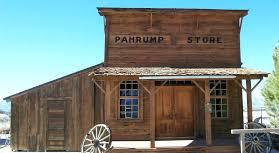
popular in the area, and Pahrump has had steady growth, increasing from about 2,000 residents in 1980 to 22,000 in 2017, to over 54,000 in 2023.

Pahrump is an archetypal example of an “exurb”, which is a commuter town in a populated area that is primarily residential, rather than commercial or industrial. People who live in commuter towns, often called a “bedroom community”, usually work in other places and commute to work and back home. This is ideal for those who want the neighborliness and relaxing environment of a small town with all the amenities and entertainment of the big city within a short driving distance.








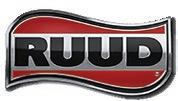

According to the U.S. Census Bureau, Pahrump has a total area of 297.9 sq. mi, all of which is land. By area, it is the largest CDP in the contiguous United States, although it ranks only eleventh nationally, since the largest ten are all in Alaska. The area lies in the Mojave Desert.


Summers in Pahrump are generally hot and dry, with occasional monsoonal rains beginning in early July. Being at a similar elevation to Las Vegas, daytime highs in summer average within a few degrees of Las Vegas. Record highs are similar between the two cities as well. A typical day during June through August brings temperatures around 100, and occasionally 110. Nighttime temperatures, however, are noticeably cooler. This is due to the lack of an urban heat island in Pahrump, allowing for intense cooling after sundown. As a result, summer nights are pleasantly warm, bottoming out in the mid-60s or 70s. By late August and early
September, the summer heat noticeably tempers down. September is the gateway to fall, which brings very pleasant weather. October highs are generally 80 degrees and nighttime temperatures in the 50s.
Like other locations in the Mojave Desert, winters are typically mild, with occasional pushes of cold air from the north. Daytime highs average from the mid-50s and 60s, but low temperatures hover around freezing for most nights between December to February. Spring brings pleasantly warm temperatures and cool evenings. Like other locations in the Mojave Desert, this is the windiest time of year. Snowfall is rare in Pahrump, but there is generally at least one snow day per year.

When you think of “wine Country” you typically think of Napa Valley in California. Now think of the Napa Valley area 40 years ago when you look at Nevada’s own wine country in the Pahrump Valley. And recall there was a time when the question was how does California ever hope to compete with France? Fast forward to today, and no one is asking that question anymore.
The global wine industry generates $29 billion in annual revenue and is at a tipping point as societal and taste changes have poised the wine industry to bring us all new experiences and opportunities in wine tasting. But the best part is, you do not have to travel to France or Germany, or even to California to begin your wine adventure. How about trying some desert made wine? Specifically, Southern Nevada Wineries and wines produced in Nevada’s Mojave Desert, just 40 minutes from Las Vegas.
Of course, growing vines under the extreme conditions of the Mojave Desert is undoubtedly a huge challenge. And you might think it’s more a hobby than a real profit-seeking industry. But change happens, and change has come to Pahrump, NV, a small town, just 33 miles from Death Valley and 66 miles from Las Vegas. The climate is very dry, with hot temperatures averaging 100 F in summer. But here’s a very interesting fact, vines thrive on stress, and while the climate of the valley surely is unusual for winegrowing and winemaking, the low humidity and the amount of sun are very favorable for wine
production. And if you select the right varietal and stay creative with it and ahead of the curve with new techniques, then there is an excellent chance of producing a real quality wine. And the Pahrump Valley wineries have done exactly that!
There are currently three wineries in Pahrump. Two long established, and a third which opened in March 2020. And each one has created a unique market niche and wine experience waiting for you to discover. Whether you seek award winning wines with a fine dining experience and ambience, the friendliness and fun of a locals favorite spot where friends gather to sip wonderful wines, eat perfectly paired foods and just relax and socialize, or you want the hands on wine-tasting educational experience and hear stories of the early adventures of making wine in the desert and enjoy a wonderful seasonal entertainment venue which joins musical talent and wine, all are a top notch experience guaranteed to bring you back to the Pahrump Valley time and time again.
We know you will agree we all love to drink wine. But in truth, how many of us actually understand the process behind it? Visiting a wine tasting room can be a great way to meet a winemaker and get the information to help you understand the complexities of making a fantastic glass of wine. And we are betting you have had that awkward moment when you felt a bit tongue-tied when facing a winemaker? Perhaps you felt you didn’t know enough about wine to ask an intelligent question.
But this is what the experience is all about. Pahrump Valley winery owners, winemakers and staff all work hard to bring guests a wonderful “wine country experience”, right here in Nevada. We encourage you to dive right in and ask the owners those questions that you might be surprised to learn they often enjoy answering, and you don’t have to find yourself tongue tied any longer when your favorite winemaker happens over. Just raise a glass…say “Cheers” and ask a way with confidence!
Enjoying a glass of wine is an experience that’s enriched through knowledge. Wherever you
are on your wine journey, wine provides a pleasure which lifts our spirits and brings us closer together. But there’s more! Unlike most pleasures, wine comes with stories; about who made it, where it came from, its grapes and soil, and finally about its craftsmanship; indeed, about the art of wine making. Wine tasting is unusual in that is offers both a tasting experience, but when combined with asking questions, it provides us with a rich educational opportunity. Understanding this simple truth may transform you from ‘liking wine’ into “loving wine”. So, let’s begin this journey of discovery by looking to the deserts of Nevada.
1731 S. Hwy 160, Pahrump (775) 600-7144
artesiancellars.com


Pahrump’s newest winery has a tasting room and offers dining, and is located at 1731 South Highway 160. The Artesian Cellars Vineyard and Winery is owned by native Nevadan and winemaker Tim Burke and his business partner Pam Tyler is the winery’s chief operating officer. "I’ve always been very passionate about the wine industry. You have to be passionate and persistent," says winemaker Tim Burke.
Any friendly conversation with Tim Burke will clearly reveal his passion for growing the Nevada wine industry, as he believes Pahrump has tremendous potential to be the wine center of Nevada, “The weather is great, the water is here, and the land is here, and Las Vegas is less than an hour away with two million people.” Mr. Burke has four vineyards, two in Northern Nevada and two in Southern Nevada. They also have leased vines in California and Washington State. And in spite of the challenges of growing wines in the Mojave Desert, their philosophy is that great wines start with great fruit and they currently harvest over 8 combined tons of
Nevada grapes from their own and leased Nevada vineyards, which include Cabernet Sauvignon, Ruby Cabernet, Barbera, Merlot, Zinfandel, Syrah, Petite Syrah, Chardonnay, Viognier, and Marsanne. To taste and learn more about their wines, please visit them in their tasting room in Pahrump, Nevada.
The excitement is evident, as Mr. Burke talks about future plans, “We actually purchased a whiskey still, so the long-term goal is to put a distillery next door, and to put in a wine garden


in the back of the property. We are thrilled that we have such a great location.”
The Artesian Cellars Winery is located at 1731 S. NV Hwy. 160, Pahrump, and is open Monday through Wednesday from 11:00 a.m. - 8:00 p.m., Thursday 11:00 a.m.- 9:00 p.m., Friday –Saturday 11:00 a.m.-10:00 p.m. and Sunday 12:00 noon – 5:00 p.m.

Sharing his answers to our Back-To-Basic questions is owner Tim Burke:
Q: How did you get started in wine?
A: After college, I traveled to Napa to visit the wineries, where I fell in love with the wine industry. Growing up in rural northern Nevada, we farmed alfalfa. After my father passed away, the alfalfa fields lay idle for several years. Because we had water rights, we needed to start farming again, and I talked my mother into planting grapevines.
Q: What has surprised you about being a winemaker?
A: The diversity that the grapes give us. The wine starts as an agricultural product, just like corn or alfalfa, and it doesn’t become wine until the grapes get to our winery and we introduce yeast. Each year the harvest is different because of what Mother Nature gives us. Crop yields and quality depend on weather, pruning, canopy management, and water. You can harvest the same grapes from the same vineyard around the same time each year and process it the
same way as the previous year, and the wine will still be slightly different.
Q: How do you know when you have a particularly good vintage?
A: It starts with the grapes. I taste the grapes in the vineyard before they are harvested. The grapes must taste good while still on the vine, or they will never make good wine. During the fermentation process, we constantly check the wines for quality. We have a lot of fun trying the wines as we press them off after fermentation. If the wine tastes good, it will taste even better after aging.
Q: What’s the best way to learn about wine?

A: Going to wineries is a great way to learn about wine and each region’s wines. Our staff helps explain our different wines, where the grapes are harvested from, and the characteristics of each wine variety. We also hold regular workshops on wine pairings. In Las Vegas, there are two chapters of The American Wine Society. They hold monthly meetings where they cover wine topics and drink wine! If you want to learn more about wine, UNLV has Sommeliers classes where you can receive formal training to specialize in all aspects of wine service, wine and food pairings, and wine storage. There are some excellent online programs as well. The NGGW organization is a Northern Nevada-based group of home winemakers and vineyard owners that holds regular meetings and does educational workshops.
Q: What is tannin?
A: Tannins are naturally occurring phenolic compounds in many plants, including a grape’s
skins, stems, and seeds. Tannins help provide texture, balance, and structure to the wine. We generally think of tannins and red wine, but both red and white grapes have tannins, but the intensity and characteristics vary. While wines with pronounced tannin can seem harsh and astringent on their own, they can be the best of all possible partners for certain foods and are a key ingredient toward a wine’s ability to age well.
Q: Do all wines get better with age?
A: No. White wines benefit very little from aging. Most white wines should be consumed within a year or two of bottling. Red wines are different. Most red wines will benefit from aging for a couple of years, and it allows all the various components in red wines to blend and soften during aging. If the reds are barrel aged, it is common to age the wine 6 months or longer in the barrel. But even red wines have a life span that is determined by the acid levels, the tannins, sulfates, and how it is stored. Modern winemaking methods can produce a very nice drinkable red wine in one to two years.
Q: What are the most important things to consider when pairing wine with food?

A: Think of wine as food. Wine is one of the only alcohols that will change the flavor profile of food and food will change the flavor profile of the wine. Some basic guidelines are that red wine generally pairs well with bolder dishes, such as red sauces and red meats. White wines generally pair well with lighter dishes like fish or chicken. Sweet wines are better for cutting the heat in spicy dishes. There are no firm rules and you should always drink what you like!
Q: What is one of the hardest things about winemaking year in and year out?
A: Several things can be challenging each year. First, sourcing enough Nevada grapes for our Battle Born wines is difficult. The state’s


largest vineyard is in Amargosa, producing enough grapes for most of the current wineries in Nevada. Unfortunately, most of those grapes went to a California winery this year. We harvest every Nevada grape we can find. Sometimes that means we are harvesting tiny amounts from private vineyards. It isn’t economically viable to harvest the small vineyards, but we do because we want to see this Nevada industry grow.
The second challenge is finding harvest help. We handpick every grape and it is hard work. Sometimes someone will show up to help harvest and decide halfway through the day that it is too much work. Sometimes they work great for a day and then never show up again.
Third, space and equipment. Because there are so few wineries spread throughout the state, each winery has to purchase all the equipment needed to make wine. Other regions that have a lot of wineries will share resources like equipment. Most of the equipment used in winemaking is imported from Europe; getting replacement parts can be difficult and expensive. It also means that equipment needs to be ordered far in advance to get to us in time. Space is also a consideration. Wine needs to age. You could have several vintages of wines in storage, which takes a lot of room. There is very little climate-controlled warehouse space in Pahrump. And that space is not inexpensive. The landlord just notified us of our current storage space that they intend to increase our rent 100%!
Q: What is the most critical time in the winemaking business?


A: Harvest is the most intense time of the year for our company. So many variables go into a harvest that it is a constant juggle to keep everything going. Harvest time also means very long hours. We typically meet at 5 AM on harvest days and try to get to the vineyards before sunrise. We try to get out of the vineyards before noon. Harvest in the desert starts in July, and it is hot! Once we finish picking grapes for that day, we are only halfway done that day. We then head to the production building and crush and destem the grapes. If the grapes are a white varietal, we will press them that same day. Once that work is completed, we still need to clean and sanitize all the equipment. Those work days can be 12 to 16 hours long.

Q: Can anyone get into the winemaking business?
A: Absolutely! Nye County recently added the Family Farm Winery to its zoning and licensing regulations, making establishing a small weekend winery easier. Desire is not enough, though, to be successful. You need to be passionate about wine and the industry. It helps if you understand organic chemistry and how to do lab tests. It can also be expensive to get into the wine industry. There is a running joke in the wine industry about “how do you get a million dollars making wine? Start with two million dollars”.
Q. What’s the best wine?
A. That’s easy, and it’s the wine you like and is different for everyone.
3810 Winery Rd, Pahrump (775) 751-7800
After opening in 1990 originally as the Pahrump Valley Winery, the Charleston Peak Winery secured over 390 National Wine Awards. Although they faced many challenges—considering they’re nestled in the heart of the Mojave Desert—they have made great strides with several Nevada vineyards located in the Pahrump Valley: Amargosa and Crystal Heights. Harvesting over 10 acres of Nevada grapevines throughout 3 vineyards, one annual harvest will produce nearly 30 tons of grapes.
Just a short 55-minute drive from Las Vegas, The Charleston Peak Winery & Restaurant are located at 3810 Winery Road in Pahrump, Nevada. It is under renovation and will reopen in the spring or early summer under new ownership and management, and will offer daily tours of the winery and grounds. The guides will take you through the history of the winery, growing grapes in Nevada’s arid climate, and the process entailed in making the wine.
On your next visit to the serene Charleston
Peak Winery, sip some of their many award-winning wines in the tasting room, stroll through the tranquil rose garden with its gazebo and Spring Mountain backdrop, or dine in the upscale yet casual restaurant! And once a year stay for the annual Grape Stomp special event, or spend the evening at a concert dancing under the stars. Stay long enough in this warm, serene and elegant world and the answers to what makes wine so special will linger long after you’ve forgotten the questions.
Charleston Peak Winery winemaker Marie Schutz provided background and responded to our Back-to-Basics Questions:
Q: How did you get started in wine?
A: My start in the wine industry was as a grape grower owning a custom crush facility in Napa Valley. I made wine for dozens of other wineries who had out grown their own facilities. Most of these clients were notable wineries with stellar winemakers. I had a unique opportunity to study the winemaking protocols of 28 industry superstars. After receiving this rare education, I derived the perfect recipe by combining different techniques. My first vintage won a silver medal, the second won gold medals, and the third year yielded double gold and best of class. I’ve now spent twenty years doing what I love to do most – making wine.
Q: Do you have to go to college specifically to learn about winemaking? Do you have a degree in winemaking?



A: Yes, the degree earned in the study of wine is a Bachelor’s Degree in Viticulture and Enology. An Enologist is an expert in the science of wine. Learning the scientific process of winemaking is imperative to making a palatable product. My background in chemistry and science was helpful in learning the fermentation science of winemaking.
Q: Who do you most admire in the world of wine, and why? Who influenced you?
A: My career in the wine industry was influenced by the owner of Peju Winery, Tony Peju. I admire him because he created a winery with beautiful gardens, a wonderful tasting experience, and fantastic wines. His retail sales are off the chart because the wines are consistently fruity, delectable, and delightful. Tony is a successful business man, who is extremely knowledgeable about all aspects of the wine industry and was willing to share his knowledge.
Q: How can you tell good quality wine?
A: Complexity, balance, flavor, and finish.

Q: How long does wine last once opened?
A: You can expect a red wine to last as long as 3 days. If the tannins are heavy, the wine could last as many as 4-5 days. White wines can last as long as 5 days. Keep both the red and white wines in the refrigerator for best results after opening. Oxidation can be avoided by using a spray of Wine Preserve which is a blend of Carbon Dioxide, Nitrogen, and Argon gas. The gas forms a blanket on the wine’s surface keeping it fresh for a longer period of time.
Q: Can inexpensive wine taste good?
A: Yes, inexpensive wine can taste good. Wine is priced based on field yield, harvesting, aging, barrels, packaging. High end wines are low yield, hand harvested, French Oak barrels, heavy glass, cork, tin capsule, label. Inexpensive wines are high yield, machine harvested, American Oak barrels, lightweight glass, imitation cork, Polylam capsules, and label costs. High yield grapes can be adjusted with concentrate, tannins, and oak to make a good tasting bottle of wine. The overhead costs are the same for both. For example, take Two Buck Chuck. a very inexpensive wine that is palatable for a great price.
Q: Are you constantly trying to make new wines?
A: Yes, new wines are always on the horizon. Last year I made a Huckleberry Riesling wine using fresh huckleberries from Idaho. This year I am working on making a chocolate wine. Next year, an orange wine and a wine made from rose pedals.
Q: What is one of your favorite varietals to work with and why?

A: My personal favorite wine to make and drink is Cabernet Sauvignon. This varietal made with

grapes grown in higher elevations, offers beautiful tannins boasting bold rich flavors with a very distinctive smooth mouthfeel and a long finish. It offers the best wine tasting experience for those experienced tasting experts
Q: What is one of the hardest things about winemaking year in and year out?
A: Deciding when to prune the vines and determining when mother nature will send the last frost. The long hours that come with harvest and crush. And managing the fermentation process on multiple tanks.
Q: What is one of the most rewarding things about your job?
A: The most rewarding thing is to hear the words, “We just love your wines.” “It’s the best we’ve ever tasted.” And of course, to receive Platinum, Double Gold, and Best of Class Awards from wine competitions.

3780 E. Kellogg Rd, Pahrump
(775) 727-1775
sanderswinery.com
Sanders Family Winery is one of Nevada's most unique and fun wine-sites. It offers stunning panoramic mountain views and is bordered on each side by the beautiful Spring Mountains to the East, and the Nevada-California border to the West, and is located on the south side of the Town of Pahrump, (about 45 minutes from the famous Las Vegas Strip).
When you drive up to the winery the first thing you notice is the architecture, as you are transported back to the renaissance period. The Italian Tuscan Villa, with the nearly 12,000-foot-high Mount Charleston as its backdrop has a statue of Teresa Lilianna, “The Wine Pourer” welcoming visitors through the main entrance to the estate which is lined with tall Italian Cypress trees and two vineyards. The tasting room includes a gallery of art by local artists and there is an amphitheater which
offers seasonal outdoor concerts and entertainment.
The Sanders Family Winery is located at 3780 E Kellogg Road, in Pahrump. Reservations are required to secure your table, you may call (775) 727-1776. They are open MondaySaturday: 10:00 a.m.- 5:00 p.m., and Sundays –11:00 a.m.-5:00 p.m.

If you are going to taste Nevada wine, be sure to include Sander’s Winery on your must try winery list.
Owner Jack Sanders answers a few of our Back-to-Basics questions and offers a historical perspective steeped in years of experience:



Q: How did you get started in the wine business:
A: There are certain privileges one receives during the structure of their life. One of those great privileges afforded me was to do a tremendous amount of world-wide traveling. In the early 70’s, I had eased out of the Radio, TV and General Media Business to do private consulting with other companies, as well as, training their associates and staff in good human relations. Living in Marin County, just south of Napa, Sonoma, “the heart of Northern California winemaking”, my company was privileged to assist several wineries in personnel training, human relations and sales.
That probably seeded my interest later in life, to get into the ownership and operations of a winery down the road. During this same time, I was traveling and working with many international companies throughout the world. I lived in Sidney, Australia for nearly a year and London, for two years. Sydney was my base for Southern Pacific and Far East countries. London provided access to all of Europe, including the great wine regions of Italy, France, Germany, and in general the Mediterranean growing regions.
Q: What goals in winemaking are you still looking to achieve?
A: Our goal appears on every bottle of our wines, and has for nearly 33 years and continues as follows: “Our goal is to produce premium quality wines that are perfectly balanced and extremely smooth”.
Q: What are the three main factors of wine tasting?
A: In most tasting rooms our five-senses play a vital roll. To narrow it down to the three main factors it would be 1. Sight, 2. Smell and 3. Taste. Let’s not forget 4. Touch and feel and of course 5. Hearing.

Once wine is placed in your glass by your server, tilt the glass and slowly rotate the glass. While doing this, observe the color, the clarity and the viscosity of the wine. Most importantly, check to see if the dishwasher did a good job getting rid of the lipstick stains along the rim.
Now, swirl the wine so it goes up onto the glass sides and falls back to the bottom. This releases the aroma of the wine. You are now using your sense of 1. Sight and 2. Smell. Wait for it: Now comes a new sense: 3. Taste. Take a little sip from the glass, roll it around your mouth so it touches all parts. This will cleanse your mouth. Swallow it. Wait a few seconds and the take another small sip. This is where you determine if you like it or not. What about items 4 and 5, touch/feel and hearing/sound?
One definitely gets to feel wine as it touches your
lips and encompasses the inside of your mouth. As for sound, the clinking of two or more glasses together in celebration of any event, and the spoken words ‘congratulations’, and all those words connected to romance is always a great sound.
Q: How should I store my wine?
A: Store your wine in an area that is not subjected to drastic temperature changes. Keep it out of direct sunlight. Store it so the bottles are on their side to keep the cork moist. If screw tops are used, treat them the same. There are wine refrigerators, for both red and white wines. These units are generally kept at about 62 degrees. Not a necessity.
Q: What are legs?
A: Legs are visual streaks in a wine glass created by the viscosity of the wine. What is viscosity? It is the texture of the wine that causes the wine to stick to the side of a glass and then slide down the inside of the glass leaving individual streaks running down the inside of the glass.
This is caused by several combinations. High alcohol, residual sugars, or a combination of both. The remaining natural sugars will thicken the

body, therefore causing streaks, “legs”, to flow down the side of the glass.
Many times, I hear “WOW! This wine has great “legs”. Seldom do I hear the counterpart: “sheets”. This describes wine that evenly flows down the inside of the glass instead of streaks it flows in an even sheet structure.
Q: What does “vintage” mean?

A: Vintage is simply the year the grapes were harvested. It generally will appear on the wine label, along with the area the grapes were grown.
Q: Sulfites, what are they and are they dangerous?
A: Sulfites, commonly known as sulfur dioxide, is a natural or added preservative. It prevents the wine from oxidizing, (turning a reddish brown). Basically, sulfites are not dangerous in wines. Many fruits you eat contain more sulfites in one bite than you will find in a bottle of wine.
So, what are you waiting for? Come experience Nevada’s own “Wine County”, in the Pahrump valley.
With over 35 years experience, we offer complete new & remodel architectural design. Our services also include; furniture, accessories, door & cabinet hardware, lighting, rugs, and window coverings and much more.





Starting and Growing a Business in Nevada and the Nevada Business Support Ecosystem Chart for doing business in the Silver State.These information products are online and available to any interested party.
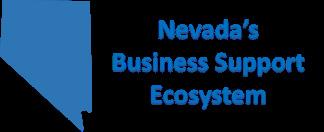


This one-page visual diagram outlines Nevada’s ecosystem of business support resources. It’s available at http://business.nv.gov/Resource_Center/Business_Support_Ecosystem/ The Ecosystem Chart offers a high-level orientation to the categories of business resources available in the state. It highlights federal, state and local government resources, as well as private sector resources.

where resources are for dreamers and doers alike



THE ROADMAP: GUIDE TO STARTING AND GROWING A BUSINESS IN NEVADA


















































The Roadmap is available on our website at http://business.nv.gov/Resource_Center/Nevada_ Business_Start_Up_Guide/. The Guide is an interactive PDF covering 15 essential topics for those thinking of starting and growing a business in Nevada. Download the Guide and use it while connected to the internet. Navigate the document by clicking topics on the included Road Map. Among other things, the Guide has a licensing page with a clickable state map to connect people to local and regional business resources. With hundreds of links, the Guide simplifies the process of learning what’s needed and who to talk to.

There’s something good happening in homeownership —





The Home At Last™ 4% Advantage is here! Ready for smokin’ interest rates, access to more down payment assistance and the chance to finally go from renter to homeowner? Take advantage, get that buying edge and visit HALRates.org to learn more about the NEW option from Home At Last™ by Nevada Rural Housing. Because you should Own It.

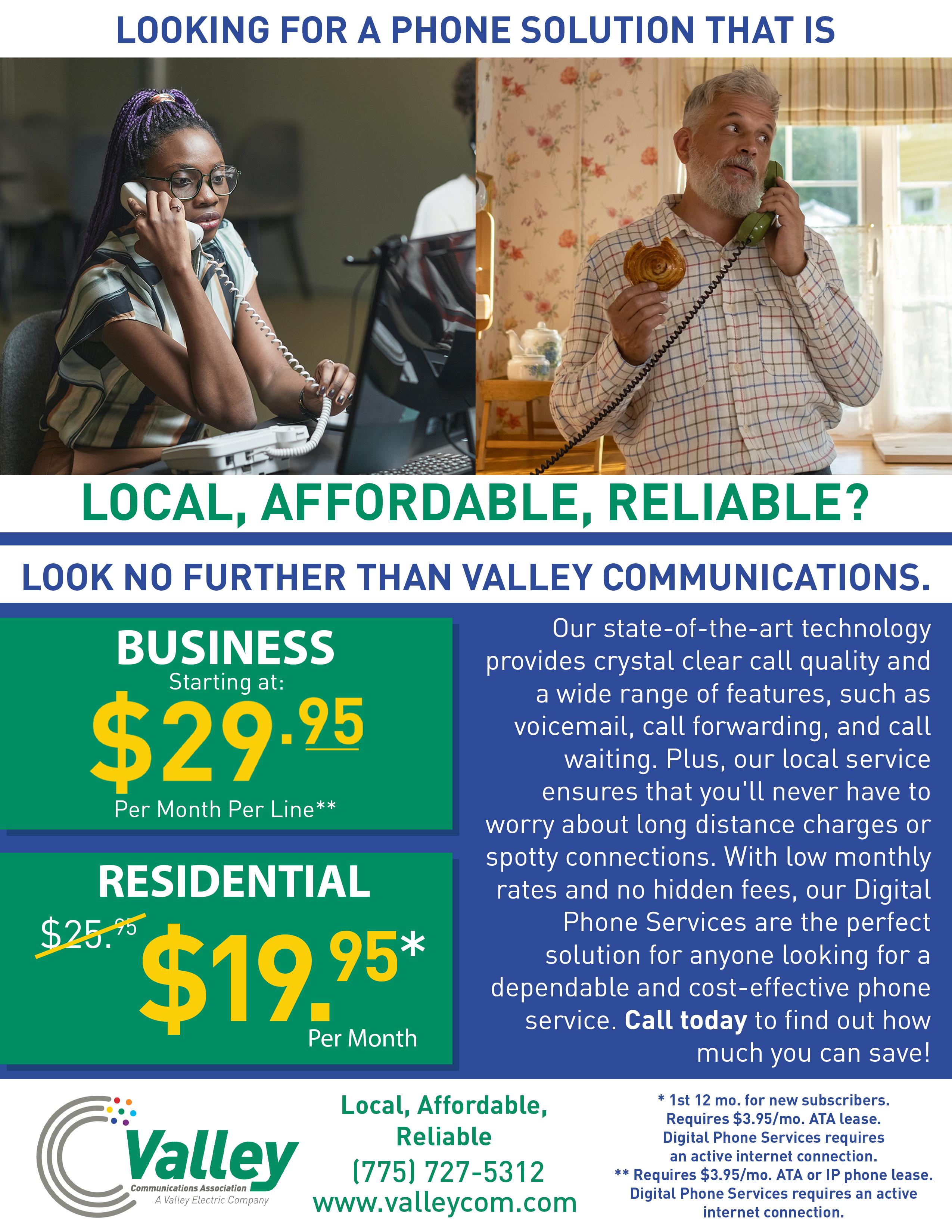


The most amazing views of Nevada can’t be found just on the Las Vegas Strip. According to “Only In Your State”, Nevada’s 365-mile Death Valley Drive is one of the state’s best road trips, which takes you to some of the most beautiful views that Southern Nevada has to offer.

The loop takes drivers from Las Vegas to Death Valley (hence, the name Death Drive) and back again. Keep in mind, there are many routes you can take for the Death Drive.
According to Travel Nevada, people usually begin the drive by heading from Las Vegas to Pahrump, which is approximately 1 to 1 1/2 hours. On this leg of the journey, you’ll be able


Once you get to Pahrump, there are a couple of great places for rest and refreshments, including one of Nevada’s “best biker bars, Mountain Springs Saloon.
Or, if you are looking for something a little more upscale, try some wines at Artesian Cellars, Charleston Peak Winery, and Sanders Family Winery. Or hit a few balls at the Mountain Falls Golf Club or get a glimpse of professional race car driving at Spring Mountain Motor Resort and Country Club.
to visit the springs at Spring Mountain Ranch State Park and take in the scenery at Red Rock Canyon National Conservation Area.From there, it’s time to explore Death Valley National Park, some three million acres of beautiful desert full of interesting rock formations, canyons, and mountains, according to “Only In Your State”.
Some of the best stopping points include the Artist’s Palette Overlook, Zabriskie Point, and Scotty’s Castle. According to “Travel Nevada”, there’s also a coffin themed roadside shop if you’re looking for some spooky souvenirs on Death Drive.
Eventually, drivers can head towards Beatty, where they can stop at Rhyolite, one of the most famous “ghost towns” in the state,



according to “Only In Your State”. Along this route, drivers can also view some unique artworks at the Goldwell Open Air Museum. Halfway through their journey, drivers will start to head south again towards Las Vegas. On this path, you’ll drive through the region surrounding Mount Charleston, where you might actually get a glimpse of snow depending on the time of year.
According to “Only In Your State”, this area is nearly 12,000-feet above sea level, one of Nevada’s tallest peaks. This long, scenic drive might be the best way to see the glorious and diverse landscape of Nevada.





To poise your business for success, consider these expert tips to leverage current trends and set effective growth strategies. — Getty Images/fizkes

2021-22 was a year of rapid transformation across all industries as the country has dealt with shifting political and economic climates, as well as mitigating hot-button issues such as climate change. In a year filled with change, there are some trends making their way into the new year that you and your business should keep an eye out for.
To lead your business in the right direction, here are 10 small business growth strategies entrepreneurs recommend.

Distributors and businesses across the country deal with supply chain issues with the continuation of the COVID-19 pandemic and its subsequent economic disruptions. Businesses must be aware of scarcities within the supply chain and get ahead of manufacturing and transportation challenges by working collaboratively with their suppliers.
“We rely on supply availability and over-the-road transportation,” explained Karen Olson Beenken, president and CEO of Blue Rock Companies. “Our supply has been cut over the last 18 months to accommodate larger metro markets. We’ll utilize
the different new product rollouts our suppliers offer and work to grow those.”
It’s important to inform your clients and partners about changes you’re making to better benefit your business across a shifting economic landscape. If the changes don’t land, it may be time to consider other options, said Larry Kidd, president and CEO of hire.
“Our company is in the talent business and [is] painfully aware how much the talent pool has changed,” said Kidd. “We are working with our client partners to educate them on the new management styles, increased compensation packages and other aspects of recruitment and retention.”
While business creation has soared, data is showing that a large number of companies have left the state and federal government markets.
“The Department of Defense outlined at a recent conference that between 43% and 60% of the small
business industrial base is no longer in the federal space,” said Padma Vatsavai, CEO at Vinformatix. “The impact [on] the small business community is due to quite a few changes in state, local and federal acquisition.”
“Strategic sourcing and category management are the name of the day,” Vatsavai added. “[We’re focused on] building a strong programmatic teaming strategy so that the company can prime or sub any opportunity.”
“The digital marketing landscape has become increasingly challenging due to congestion and evolving regulations, said Joe Shamess, owner of Flags of Valor. “This is forcing many traditionally digital companies to explore other sales channels and marketing strategies,” he said.
To mitigate these challenges, Shamess said his company is getting creative with its selling methods by expanding its national retail sales channel for select products and growing the company’s Amazon sales channel for its full product catalog.
“Small business owners will now be able to bring in more specialized freelance workers to carry out tasks without having to deal with the hiring and training costs that are often associated with recruiting a full-time employee.”

- Eden Cheng, co-founder, PeopleFinderFree
Phil Strazzulla, founder of Select Software Reviews, explained that small businesses must adapt and be “practical” when it comes to sales, as consumers continue to favor online and mobile shopping.
“[Businesses] need to widen their online footprint to gain a significant proportion of customers from the current market,” said Strazzulla. “A simple way to sell products is to have a [seller account on] Shopify or Etsy. To sell services, … list [your company] on freelance and contract websites.”
Video marketing has become an integral part
of a successful marketing strategy with the rise of live videos on platforms like TikTok and Instagram. It’s estimated that by 2022, videos will account for 82% of all consumer traffic. That’s why video SEO should be a top priority for businesses in 2022, said Leslie Gilmour, a marketer at ServisBOT.
“Small businesses that incorporate short-form videos into their website posts will see more organic traffic coming from search engines,” explained Gilmour. “As TikTok continues to grow, search engine algorithms will shift to articles and posts that include short-form videos. Short-form videos from TikTok and YouTube may even become the main point of ‘how to’ searches.”

Partnership marketing is a strategic collaboration that gives you and your partner company a chance to reach a wider audience together, explained Tyler Martin, founder and certified business coach at Think Tyler.
“Collaboration with another company can aid in
the development of better marketing initiatives that benefit both parties,” said Martin. “If your target clients are similar, you may pool your resources to better your marketing techniques, build your brands and expand your audience reach.”
Martin suggests starting with items or services from one company offered with a purchase from the other.

“For example, if a consumer purchases a product from you, you can provide a discount coupon that they can use to purchase discounted products from your business partner,” said Martin. “Co-branding of a product or project can also boost both companies’ marketing power.”
The number of gig workers, freelancers and contractors has grown exponentially over the last few years and they make up a large portion of workers within the current market. Eden Cheng, co-founder of PeopleFinderFree, says this share of the job market will continue to grow in 2022.
“Small business owners will now be able to bring in more specialized freelance workers to carry out tasks without having to deal with the hiring and training costs that are often associated with recruiting a full-time employee,” said Cheng. “With the importance of being agile in today’s economic environment … as well as the rise of remote work, … skilled outsourced contractors will be the key to successful business growth moving forward.”
While small businesses may be competing against larger businesses to work with online
influencers, collaborating with microinfluencers is an option to consider, said Anton Giuroiu, architect and founder of Homesthetics.net.
“As influencer marketing is becoming more popular than ever… micro-influencers are going to be the best option for small businesses because they don’t cost as much and they are more open to collaborating with small businesses too,” explained Giuroiu. “With a couple of these small influencers helping [your business] reach specific audiences, growth will not be an impossible feat.”

Throughout the pandemic, businesses have been dealing with “The Great Resignation” as workers are quitting their jobs at record-high rates. One of the reasons for this is that people are changing their definitions of what they consider a healthy work-life balance and what they want in a company culture, explained Amanda Ma, CEO of Innovate Marketing Group.
“The pandemic has shifted the way people incorporate work into their life, whether it’s moving to another state for cheaper housing or not going into the office every day and [getting] the opportunity to do remote or hybrid work,” Ma said.
“Our agency went from full-time in-person to full-time remote to … a hybrid model. We surveyed our team members to see the model that works for us. Not all solutions are made equal, [and] culture is part of that,” she added. “A big factor [for employees], in addition to salary and benefits, is culture, [so have] a culture strategy in place.”



























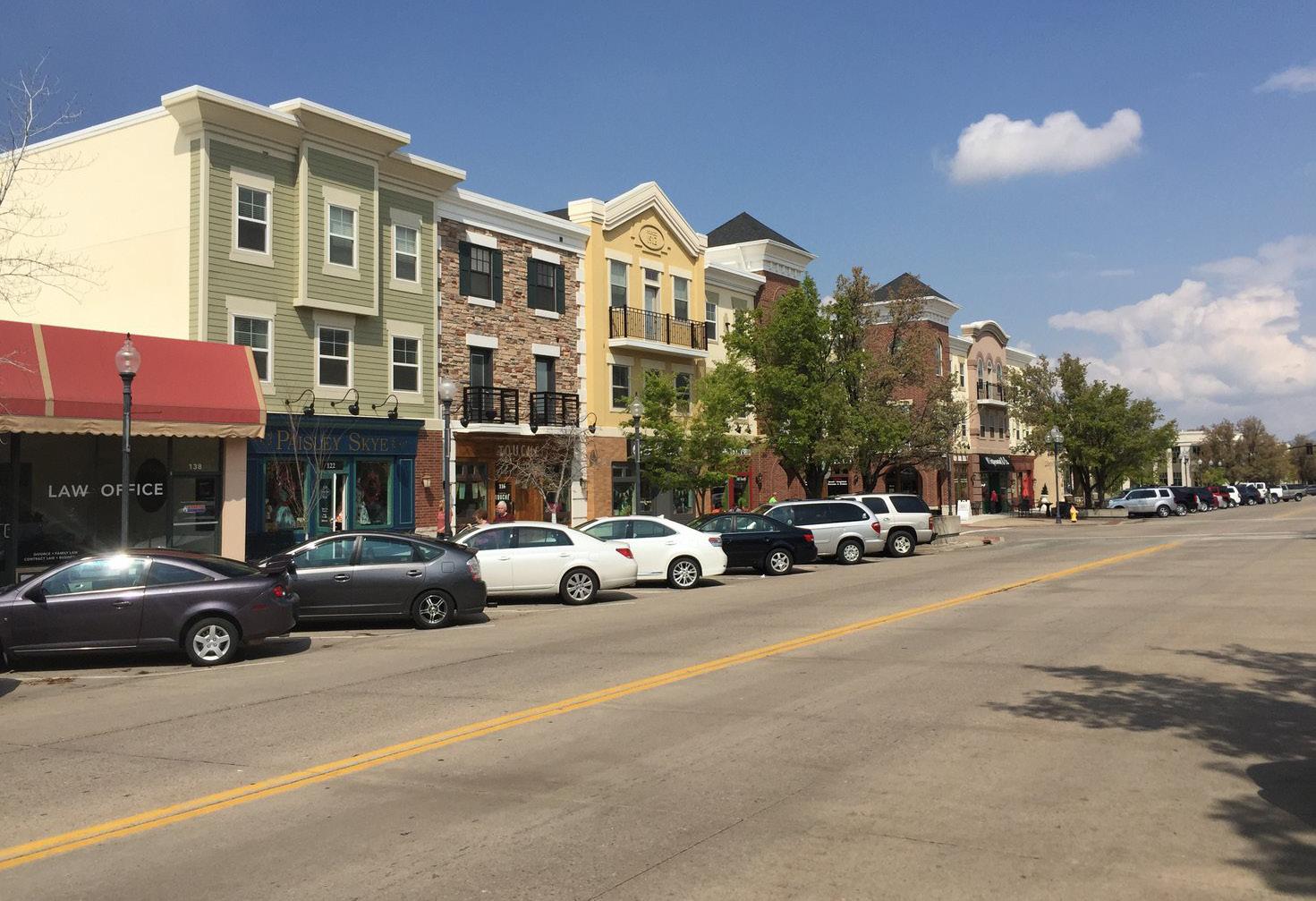
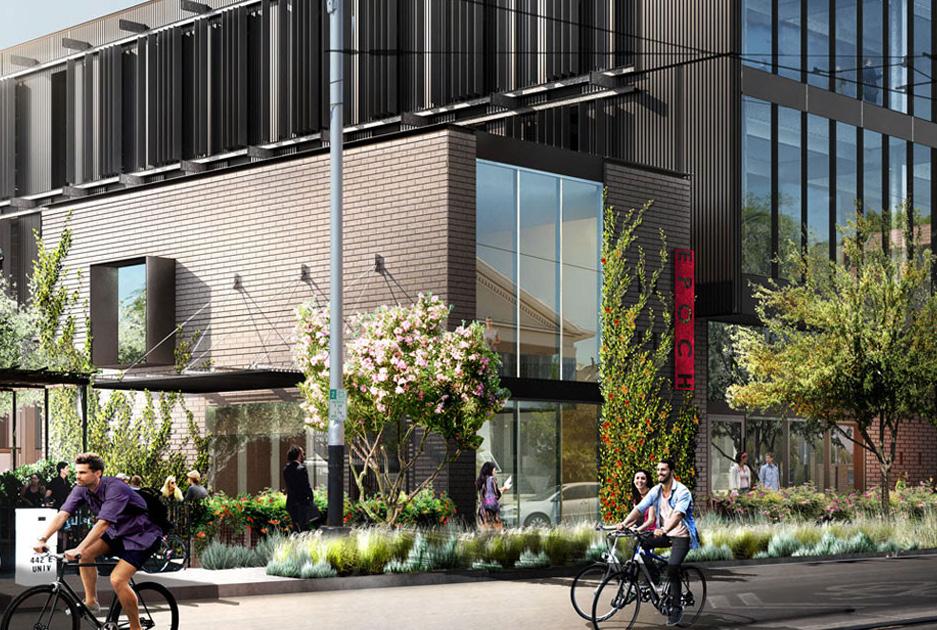
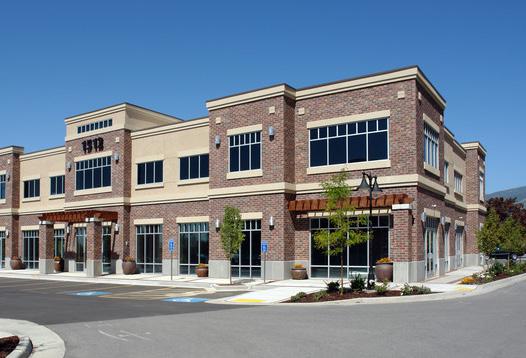
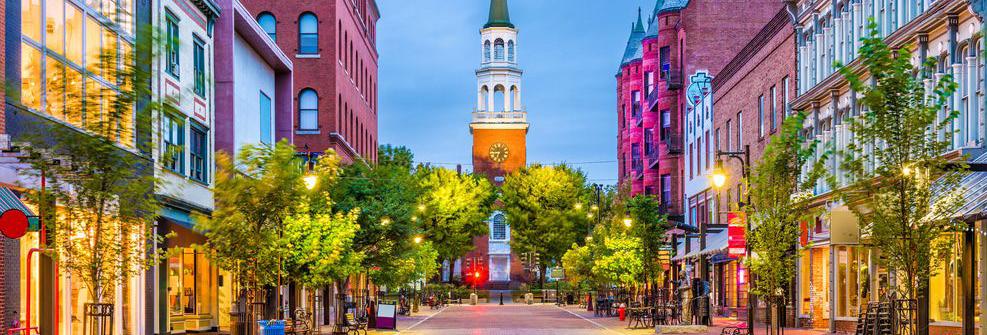
 by Craig S. Galati, LGA Architecture
by Craig S. Galati, LGA Architecture

into town where you saw 3-4 story buildings nestled along Main Street with banners and wide sidewalks. The retail stores, such as the Five and Dime, the grocery store, and the local insurance agent’s office were all located at the street level, with a mix of apartments above. These rural towns had small footprints but packed in everything the townsfolk needed.
As our society turned away from its agrarian roots, people gravitated to urban areas in search of jobs and new opportunities. This new vision for America was built upon a home ownership model which spawned a new product — the residential subdivision — now a prominent feature around all of our greatest cities. The model of sprawl created the need for large retail centers, fortified highway systems, and established our dependence upon the automobile.
The exodus of the middle class to the suburbs left the inner city empty, and soon diminished property values and changed the makeup of
tired of spending their time on exhaustchoked freeways. As commutes got longer and developable land became scarcer, a new resurgence for mixed-use development began bubbling up and gaining momentum.
Mixed-use developments are being built across the country in record numbers. These new developments, billed as urban villages, town centers, and transit-oriented developments, all boast simpler lifestyles, a wide range of housing types, walkability, and access to work, shopping, entertainment, and recreation. These new communities harken back to the small towns of the 40’s and 50’s. There are many benefits of mixed-use developments, some of which are delineated below:
Mixed-use developments promote efficient use of land. As the cost of land continues to rise, developing a more dense, mixed-use project allows for the most efficient use of the land. Infrastructure and the extension of
utilities are more affordable than other types of development and allow the cost of that infrastructure to be amortized over a larger project. Many municipalities offer density bonuses for mixed-use development allowing larger projects to be built, reducing the average cost per square foot and providing a more sustainable and energy efficient development. As a project increases in scale, so too does its capacity for retail space and other amenities. Another benefit is that financial stakeholders of mixed-use developments can diversify their investments over several market sectors within a single project, creating additional capital for these developments.
Mixed-use developments protect rural areas from additional development. Since mixeduse projects are more dense than single family residential uses, they are more appropriately located near highways and transit corridors and serve as buffers between high-intensity land uses and lower residential uses. This provides protection for rural areas and limits traditional sprawl. With access to shops, restaurants, and workplaces, residents have the ability to walk and bike within their

communities. Studies have shown that residents of mixed-use developments reduce vehicle miles by nearly one half as compared to those living within traditional subdivisions. This reduced vehicle usage provides additional protection from traffic for the rural areas of town and reduces congestion and vehicle pollution.
Mixed-use developments promote healthy lifestyles. Walkability is a key component of a mixed-use development. The pedestrian and bicycle-friendly designs of these developments encourage a more active and healthy lifestyle. According to AARP, walking 8,000 steps every day has been proven to add years to one’s life and provides a 51% lower mortality risk compared to those who do not walk daily. Not only do mixed-use developments create healthy conditions such as decreased pollution, they strengthen the social and mental well-being of their residents. These communities foster a strong sense of community and provide a variety of recreational opportunities. Employee-residents also receive the benefit of less stress due to long commutes and traffic congestion.

mixed use development, it’s not your grandfather’s development
Mixed-use developments create higher quality projects. Projects of a larger complexity and scale lend themselves to a higher quality of design and construction. Higher quality materials are not only required to meet building codes, but they become more affordable as the project increases in size. These large projects appeal to the best architects, engineers, and general contractors in the market due to their size, complexity, and prominence.
Mixed-use developments are desirable places to live. The quality of life within mixed-use developments is greatly enhanced and attractive for many sectors of the market. COVID forever changed how we as a society value our time and connections to our family. Our lives are more connected and the boundaries between family, social life, and work are blurred. Mixed-use developments create even greater opportunities for integrated live, work, and play.
With low taxes, great weather, entertainment, professional sports, food, jobs, and world-class outdoor recreation, Southern Nevada will remain an attractive place to live




and will continue to grow. New development, which is expected to drive an increase in population over 3,000,000 by 2035, will require a different approach. Development in the valley is pushing up against the mountains and the boundaries of federal recreation land, meaning that future development will likely need to grow upward rather than outward. As the availability of land in the Las Vegas valley continues to decrease, many will look for alternative means of development.
It is only an hour drive over the mountain from Las Vegas to Pahrump in neighboring Nye County. The area boasts developable land, a growing economy, and close access to Las Vegas and Death Valley. It only makes sense that new development will be knocking on Pahrump’s front door. This new development could continue the tradition of urban sprawl so prevalent in the desert southwest, or perhaps introduce a new style of development that will help preserve and enhance the quality of life currently enjoyed in Pahrump. A vision of mixed-use development could be the best choice for livability, creating options in the market and improving upon the unique character of Pahrump and Nye County.
mixed use development, it’s not your grandfather’s development



Startups and entrepreneurial companies are vital components and drivers of an Innovation Economy. An Innovation Economy is built through an approach called Innovation Based Economic Development (IBED) often also known as technology based economic development.

Innovation Based Economic Development (IBED) contains five core elements:
* Increasing research capacity.
* Commercialization of research (transformation of research to new products and start-ups).
* Fostering entrepreneurship.
* Increase access to capital.
* Build up and expand a technically skilled workforce.
When new scientific knowledge and technology is being generated in a region, innovators and entrepreneurs are creating startups and high-growth small businesses while the local workforce is educated and trained in the necessary skills to utilize the latest advances. GOED has several Workforce Development programs implemented to support IBED . Consequently, the entire regional population will benefit from increases in growth and prosperity.
These integrated forces will drive an economy that creates new businesses and good paying jobs, which in an Innovation Economy will predominantly be STEM jobs. GOED oversees several different programs and funding instruments to invest in Nevada’s innovation based economic development:

The Small Business Jobs Act of 2010 (the Act) was created to help increase credit availability for small businesses. The Act created the State Small Business Credit Initiative (SSBCI) and appropriated $1.5 billion to be used by the US Department of the Treasury to provide direct support to states for use in programs designed to increase access to credit for small businesses.
Battle Born Venture: Battle Born Venture is Nevada’s state venture capital program. It makes equity investments in early stage, high-growth Nevadan enterprises. Overseen by GOED, Battle Born funds enterprises in the following industries: Aerospace & Defense, Agriculture, Energy, Health Care, IT, Logistics & Operations, Manufacturing, Mining, Tourism & Gaming, and Water. For more information go to: goed.nv.gov/battle-born-venture/

Collateral Support Program: This program supplies cash collateral accounts to Nevada financial institutions to enhance the collateral coverage of borrowers. These accounts will cover all or a portion of a calculated collateral shortfall as determined by the lending institution. For more information go to: goed. nv.gov/collateral-support-program/
The small Business Enterprise Loan Program (Nevada Opportunity Fund) is assigned to the GOED. With the approval of Senate Bill 126 of the 2017 Legislature, this account was created in the General fund as a revolving loan account and provides for loans to small business enterprises, minority-owned businesses, women-owned businesses and disadvantaged businesses.
The Knowledge Fund, administered by GOED, is a major instrument to recruit highly specialized science and research faculty. This recruitment effort further expands already existing research areas of excellence in the state and thereby assists applied research centers in the effort to support industry innovation in Nevada. Through the Knowledge Fund, GOED supports projects at the University of Nevada, Las Vegas (UNLV), the University of Nevada, Reno (UNR), and the Desert Research Institute (DRI).
To obtain this funding, the Nevada System of Higher Education (NSHE) submits applications to GOED for projects that could benefit from Knowledge Fund support.
At Nathan Adelson Hospice, it is our vision that no one ends the journey of life alone, afraid or in pain. We are the hospice of choice and the Pahrump community’s trusted partner for comprehensive end-of-life care


In addition to inpatient care and homecare, we also offer a variety of support groups through the Center for Compassionate Care, including bereavement services and Camp Erin
For more information about what we do and how we can help you, call (775) 751-6700
www nah org
 by Robert Roy Britt, Contributor, US Chamber of Commerce
by Robert Roy Britt, Contributor, US Chamber of Commerce
Business owners who put all the pressure to innovate on themselves miss out on proven ways to generate new products, services and processes needed to stay ahead of the competition. Making your company more innovative starts with viewing innovation as a function of the business, just like accounting or manufacturing. Once a culture of innovation is established, you can turn to tactics. Several experts interviewed by CO— offered specific suggestions.
“It is always better to have more minds for innovation than just one, no matter how smart the owner,” said Bart Barthelemy, founding director of the Wright Brothers Institute and author of the new guidebook, “Collaborative Innovation.”
Successful small business owners are often expert innovators, or sales-oriented rainmakers or conductors with a keen eye for operations— but never all three. Regardless, when it comes to innovating, smart entrepreneurs will take inspiration from anyone.
Wise leaders also recognize the one thing they never have enough of: Time.
“While I think most small business owners desire to foster innovation, doing so takes an incredible amount of that precious commodity,” said Shaun Limbers, associate director for the Baugh Center for Entrepreneurship and Free Enterprise at Baylor University.

“Innovation is a team sport, so the most important step is to identify people in the company who can regularly engage in innovation sessions,” said Rebeca Hwang, a professor of practice at Arizona State University’s Thunderbird School of Global Management and leader of the Global Center for Family Business and Entrepreneurship.
Big or small, innovations involve solving problems and challenges, whether with products or services, internal systems and processes or changes in the marketplace. But people in a company often get stuck in silos, unable to envision much beyond their area of expertise and routinely excluded from idea generation. Hwang’s suggestions:
- Rotate employees to different roles so they
Innovation, like many other skills, can be learned, and many online courses exist for the purpose of cultivating traits like creativity and skills like idea generation. — Getty Images/fizkesgain a broader understanding of the company’s challenges and opportunities.
- Have company leaders take a day each month to work in someone else’s shoes.
- Even the owner—especially the owner— should get her hands dirty on the factory floor, or perhaps answer customer service calls now and then.
People outside the company can offer inspiration, too. Seek suggestions from clients and customers, vendors and suppliers. Even marketing, advertising and local networking events can contribute.
“Small companies with limited resources can foster innovation by becoming more visible in a number of places—be it their local communities, their business industries, their target customer markets—and without necessarily having to break the bank,” Limbers said. “Visibility allows for highly valuable engagement with customers, fellow business owners and a myriad of other potential stakeholders, which increases the potential for successful ideation and innovation through collaboration.”
“Innovation is a team sport, so the most important step is to identify people in the company who can regularly engage in innovation sessions”
- Rebeca Hwang, Arizona State University & Global Center for Family Business and Entrepreneurship
Innovation may be inextricably linked with inspiration, but many of the skills needed to generate ideas and bring them successfully to market can be learned—by you or key
employees you might put in charge of innovation. Research suggests innovation requires being alert to the good ideas, then being proactive to develop them.
- IDEO U teaches innovation and creativity via online classes.
- Coursera offers online instructionals in developing innovative ideas for new companies and managing innovation initiatives.
- An online course from the global Institute for Management Development teaches how a creative mindset and the right strategies can foster disruptive innovation.
- Harvard Business School also has an online course in disruptive innovation.
Harvard University’s extension school offers an “Innovation and Entrepreneurship Certificate” in which one learns “principles and methods of idea generation and development” and can gain fluency in how to communicate, finance, or market a new idea, product, or initiative.”

People innovate, but software offers a vital assist for everything from discovery through data analysis to idea presentation. The first step in unleashing technology is simply overcoming any reluctance to using it.
“Small businesses with less than 250 employees can access new markets and target new customers at a relatively affordable cost using digital tools,” according to research by professional services firm Deloitte. Compared to relative

ways to make your small business more innovative
Luddites, digitally advanced small businesses earn twice the revenue per employee and grow revenue four times as much per year, Deloitte found.

There are apps designed specifically to inspire ideas and manage innovation efforts. But software that can spark innovation may be already loaded on your computers, or available at relatively low cost, according to a new study in the journal Information and Organization.
“The message of the study is that companies could derive greater benefits from limited resources,” said study leader Dorit Nevo, an associate professor in the Lally School of Management at Rensselaer Polytechnic Institute. “They do not need to buy specialized costly software, because under the right conditions employees can be innovative with IT that is already implemented.”
Helpful apps include software for customer
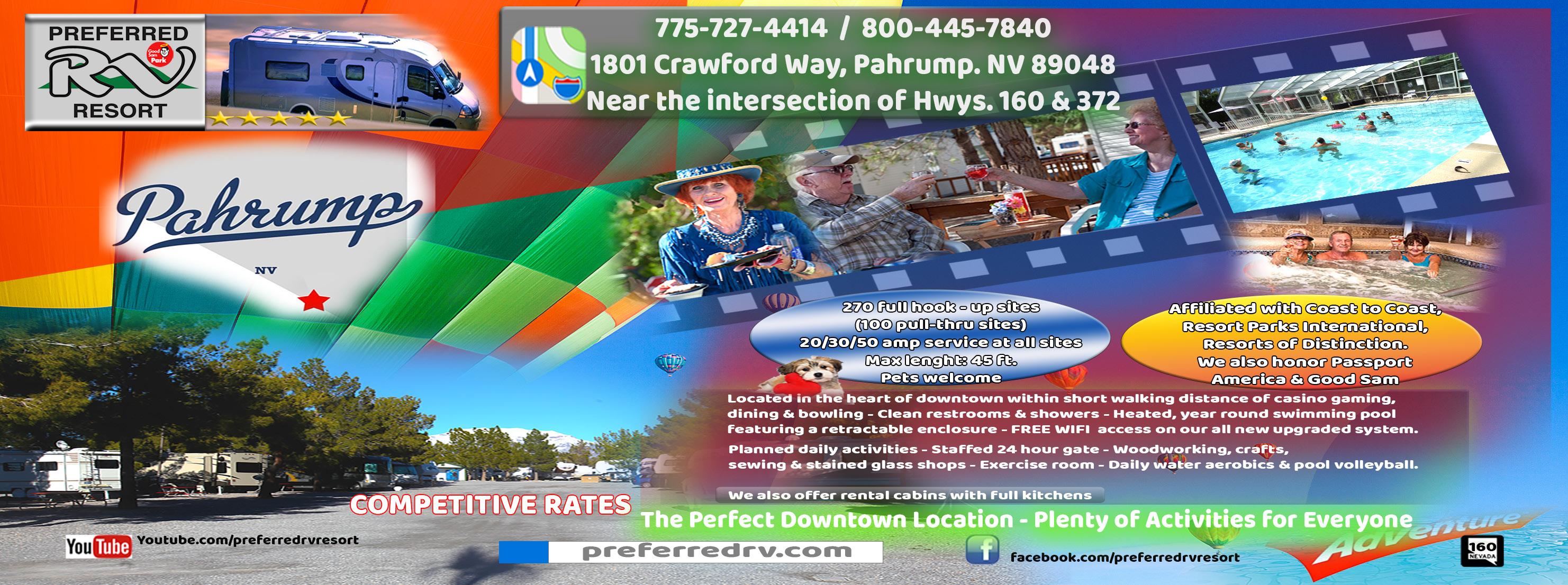
relationship management, enterprise resource planning, material requirements planning and analytics suites, the study found. The key is to encourage employees who are inclined to learn the technology to actually play around with it, Nevo explained. If those curious explorers are also creative thinkers and have a good understanding of their jobs and the overall business, they’re apt to discover new opportunities. The software can then help them champion their ideas.
“Innovation is found not just by using technology specifically created to support idea-generation,” Nevo said. “Creativity comes from both the tool and the person who uses it.”
4 ways to make your small business more innovative


The town of Amargosa Valley is an unincorporated township located in Nye County, Nevada, with a Town Governing Board of 5 members elected by the residents of Amargosa. The townsite was formerly known as Lathrop Wells, and is a quiet, friendly community located in a region of historical significance near the southern Nevada-California border. Situated in a desert of the same name, it is flanked by the Funeral Mountains to the west, the NNSS on the north, and Yucca Mountain to the northwest. The town of Amargosa Valley is located approximately 88 miles northwest of Las Vegas, 35 miles northwest of Pahrump, and seven miles north of Death Valley Junction, California. It is unknown how long man has frequented the area of the Amargosa Valley, but artifacts have been found as far back as 10,000 years. Today, Amargosa Valley plays a definite role in the Nevada Test Site and tourism in Nye County. Many residents believe that their community will continue to play an important role in future research and development in both defense and nondefense industries. They are proud of their pioneering role in the development of nuclear weapons and in research on such projects as the nuclear rocket engine. And with their proximity to Ash Meadows National Wildlife Refuge, Big Dune and to Death Valley National Park, they are a great source for history buffs and tourists visiting Nye County. Some of the largest industries in Amargosa Valley are restaurants, towing services and dairy farms.
For more information on Amargosa Valley, NV, visit: http://amargosavalleynv.com/index.html
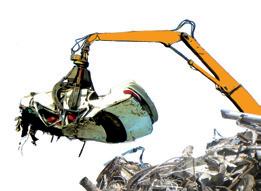










Beatty is located in southern Nye County approximately 100 miles northwest of Las Vegas and is a major hub along U.S. Hwy. 95 between Reno and Las Vegas. The town of Beatty is an unincorporated township with a Town Advisory Board of 5 elected members. Beatty is approximately eight miles from Death Valley National Park and has been designated as the “Gateway to Death Valley” since the park was founded in 1937. In addition to easy access to Death Valley National Park, it offers off roading, bird watching, hiking, ghost town exploration, camping, photography, filming, star gazing, geocaching, and the list goes on. This community is approximately 708 square miles and is sparsely populated with just over 1,000 residents, and is truly, “Your Gateway to Adventure”. The largest industries and contributors to the economy in Beatty are manufacturing, retail, mining, public administration, and hotel/gaming.
For more information on Beatty, NV visit: https://www.beattynv.info

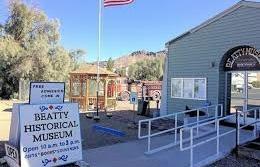

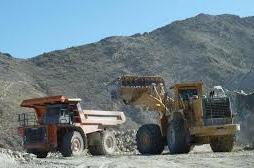
The town of Gabbs is an unincorporated town in Nye County, Nevada, and was founded in 1941, as a company town for Basic Magnesium, Inc. (BMI), who operated a magnesium mine within the town limits. The magnesium was used for the World War II effort to make plane parts lighter than aluminum. Today, Premier Magnesia, LLC, operates the mine and employs over 90 employees, with many years of production left in the mine. The mine in Gabbs is the oldest, continuously operated mine in Nevada. The largest industries in Gabbs are mining, quarrying, oil & gas extraction and retail.
For more information on Gabbs, NV visit: https://www.nyecountynv.gov/DocumentCenter/View/20838/Gabbs?bidId=
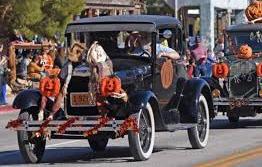
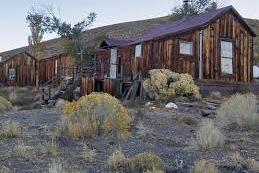
communities in nye county
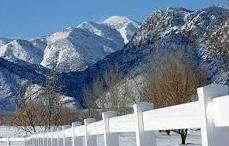
Round Mountain is an unincorporated town in Nye County, Nevada. The population of Round Mountain as of 2014 was 1,868, and it is located 70 miles north of Tonopah and nearly the same distance south of Austin. It lies on the east side of Big Smoky valley, at the base of the Toquima range, being 12 miles north of Manhattan and three miles southwest of the abandoned mining camp of Jefferson. The town takes its name from a small oval hill of rhyolite which rises about 400 ft. above the alluvial slope of the valley's edge. Round Mountain is best known for the Round Mountain Gold Mine, a large open pit heap-leach gold mine owned by Kinross Gold Corporation and Barrick Gold Corporation. The first gold production from the Round Mountain District was in 1906, and by 2006 the mine reached the significant milestone of 10 million ounces poured. The mine has recently expanded with a satellite pit 5 miles north of the existing operation. Round Mountain Gold Corp is the community’s largest employer.
For more information on Round Mountain, NV visit: https://townofroundmountain.com
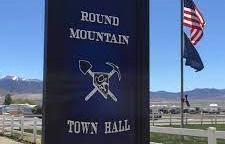
Tonopah is an unincorporated town in northern Nye County and the County seat. The Town is located along U.S. 95 about halfway between Nevada’s two main population centers of Las Vegas (220 miles) and Reno (240 miles). The community began around the turn of the 20th century when the Town’s founder, Jim Butler discovered what would be the second richest silver strike in Nevada history. Because of its location Tonopah’s night skies are considered among the best in the country for stargazing. Visitors can tour their Historic Mining Park and the Central Nevada Museum, or you can go off roading, visit nearby ghost towns, shop in unique stores and even pan for gold during the town’s annual Butler Days Celebration. Tonopah is a small town with a population of approximately 2, 355 people and 337 businesses. Some of the largest businesses/employers within the community are motels & hotels, governmental offices, grocery/retail and restaurants.
For more information on Tonopah, NV visit: https://www.tonopahnevada.com

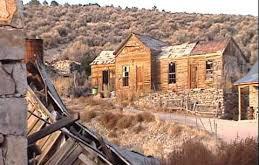
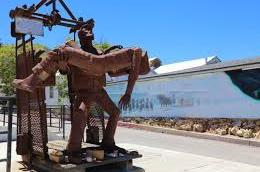

Whether you are in the planning stage of your dream pursuit or you’re looking to safeguard all that you’ve accomplished, I will meet you wherever you are in your journey.
Let’s talk about your plans, and how I can help you protect them.




Pahrump is located in Nye County, Nevada, only one hour from Las Vegas, and is known for its beautiful environment and many recreational activities.
Popular attractions to the area include the Pahrump Valley vineyards and the Yucca Mountain Science Museum. While visiting the area there are a variety of campgrounds that offer comfortable amenities and close proximity to all that Pahrump has to offer.

When you visit Pahrump and the southern Nevada area, you just may be lucky to see wild horses and burros roaming the area. These magnificent creatures were originally brought into the area by ranchers, miners, and others during the settlement of the Wild West days. They come in a variety of colors and form small family groups as they travel around the region searching for food and water. Please note that these animals are wild and it is against federal law to harass or approach them.

There’s a reason Pahrump, NV, was dubbed an “RV-er’s Paradise.” There are three 10-star rated RV Resorts – Lakeside Casino and RV Park, Wine Ridge RV Resort & Cottages and Nevada Treasure RV Resort, not to mention, the town has a considerable amount of other highly rated RV parks to choose from.

Unleash your inner speed demon and let Spring Mountain Motor Resort & Country Club navigate you to the wild side!
The resort is home to the Ron Fellows Corvette Driving School, Cadillac V-Series Academy, Radical Racing School, and the SCCA License Recommendation School. It’s your turn to get in the front seat of your high-performance dream.

Go on an outdoor adventure and take advantage of the scenic views and exceptional weather Pahrump has to offer. Hike your heart out, or go offroading in an ATV or mountain bike.


PrairieFire Nevada, formerly known as FrontSight, is one of the largest firearm training facilities in the world. Here you can learn how to safely and properly handle a variety of guns and shoot anything from a handgun to a rifle or a shotgun.
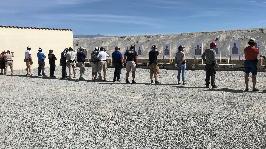

Fast cars, fine wines and dramatic scenery await visitors to this beautiful southern Nevada destination. Just 60 miles west of Las Vegas, Pahrump has staked a claim for itself as an alternative to big-city glitz and traffic. Serving up small-town charm with all the amenities you could ask for, it’s a great place to unwind and the perfect jumping-off point for exploring some of the Southwest’s most awe-inspiring outdoors destinations.
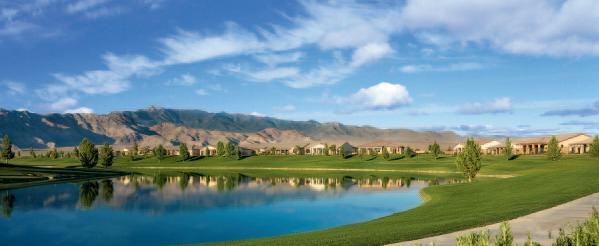
POPULATION IN NYE COUNTY

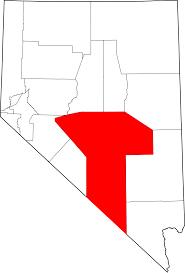
54,000
14.2% GROWTH SINCE 2010

HOUSING:

$197,700 MEDIAN PROPERTY VALUE
72.6% OWNS A HOME
$900 MEDIAN RENT
 Source: U.S. Census Bureau
Source: U.S. Census Bureau
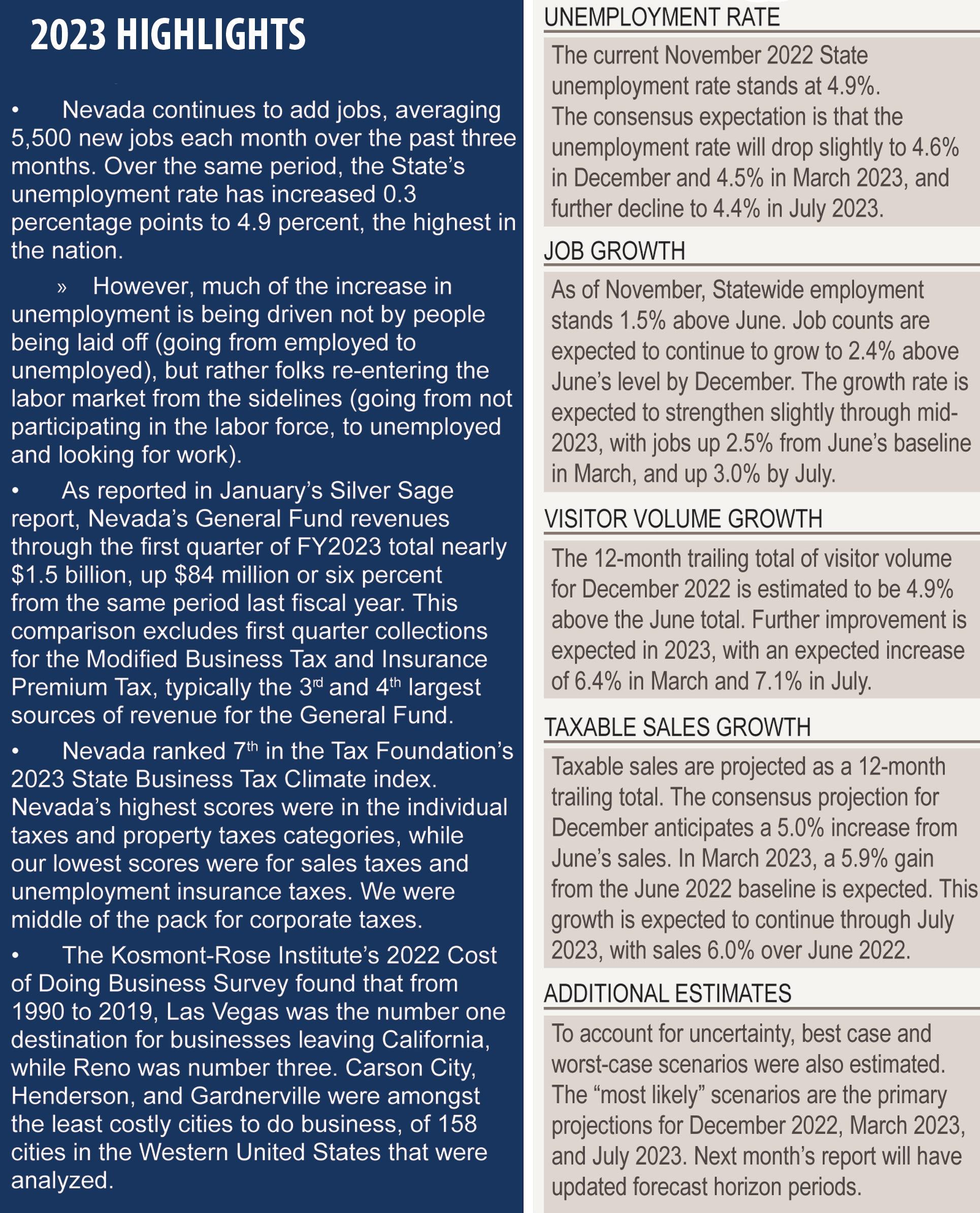 by the Governor’s Office of Economic Development (GOED)
by the Governor’s Office of Economic Development (GOED)

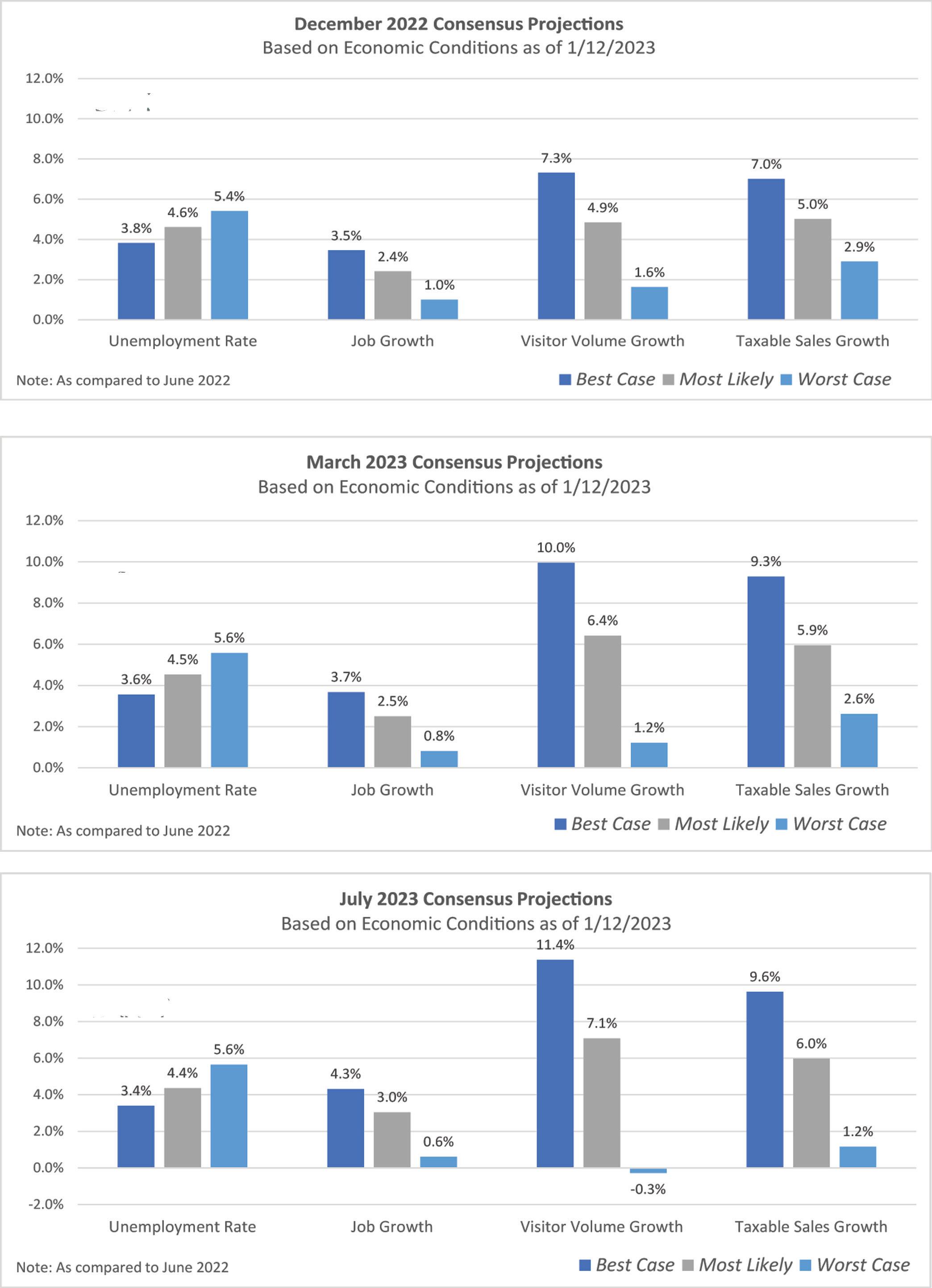




 by Thomas M. Sullivan, Contributor, US Chamber of Commerce
by Thomas M. Sullivan, Contributor, US Chamber of Commerce
During a pandemic-era marked by shutdowns, labor shortages, supply chain disruptions and inflation, there has also been a surge in applications to start new businesses. Entrepreneurship has taken off at unprecedented levels.
Since August 2020, applications filed to start new businesses have averaged around 400,000 per month. Prior to the pandemic, they hovered around 300,000 per month, according to U.S. Census Bureau data. There are signs that this is not just a pandemic-era trend. At the end of 2022, entrepreneurship was still booming.
The trend isn’t surprising if you have spent time with an entrepreneur or small business owner. Entrepreneurs solve problems, and when America experienced huge problems in a concentrated time frame, entrepreneurs rose to the occasion. New economic needs and changing consumer preferences created more circumstances for new businesses to start.
For example, City Bonfires was founded in 2020 when Michael Opalski, a restaurant
industry salesman, and neighbor Chris McCasland, who owned a restaurant and worked in the entertainment industry, were worried about their jobs. They got together to create a portable, reusable mini bonfire device suitable for apartment porches and hikes — and perfect for home-bound workers craving fresh air.
The widespread boom in entrepreneurship is a huge benefit for communities and a great sign for the U.S. economy. As new businesses grow, they are likely to employ more people in the community and fuel the local economy. About one-third of current new business applications are marked "high-propensity," meaning they are likely to hire.
Entrepreneurship can also be a path of opportunity for minorities, women, veterans, young entrepreneurs and immigrants to realize their dreams. There was a 33% increase in Black male business owners in 2020 and 2021, according to a study, and a 22% increase in Black female business owners. Our country’s unique free enterprise system allows for this kind entrepreneurial growth, and Congress
6 ways for entrepreneurs to keep thriving
and the administration should be doing everything possible to ensure these new businesses grow and succeed. The U.S. Chamber of Commerce details how elected officials can foster new entrepreneurs’ freedom to exist and thrive in the Small Business Bill of Rights. Great bipartisan work happened in reaction to the devastation brought to small business by COVID-19 when Congress passed seven laws in 12-months, all specifically designed to help small business. It should not
take a national disaster to fuel smart policy that benefits small business. The widespread boom in entrepreneurship is a huge benefit for communities and a great sign for the U.S. economy. As new businesses grow, they are likely to employ more people in the community and fuel the local economy.
Congress and the administration can continue to support new entrepreneurs and small businesses by:
1 2 3
Encouraging individuals to start businesses rather than penalize entrepreneurs. Reclassifying 1099 businesses as employees penalizes independent contractors who want to blend several business activities and benefit from self-earned income and increased flexibility
Preventing punitive tax increases on small businesses by extending the 20% pass-through deduction utilized by small businesses. Without congressional action in three years, small businesses will face a massive tax hike
Avoiding new mandates (like project labor agreements, Davis-Bacon wage requirements, mandatory retirement plans, etc.) that raise the cost of entry so high that small businesses can never break into the federal contracting arena. 4 5 6
Reversing pending moves by the Federal Trade Commission that make it harder for small businesses owners to eventually partner or sell to a larger business.

Protecting the freedom of businesses to set their own prices and enter into contracts by opposing government price controls and new regulations governing private business contracts.
Opening up more opportunities for small businesses to sell to the 95% of the worlds consumers who live outside the United States by expending free trade opportunities.
Our communities across the nation must remain good places to do business — especially during a period of accelerated entrepreneurship. Government standing in the
way only hinders entrepreneurs and small businesses at a time when we should be doing whatever is necessary to support these new businesses and economic growth.
The Emerging Small Business (ESB) certification program was created in 2014 to encourage the development and growth of small businesses in Nevada. The program seeks to assist small businesses in obtaining work with the state and local government agencies through identifying small businesses that want to contract with governments.

An applicant seeking certification as a Local Emerging Small Business in the State of Nevada must submit a complete application to the GOED. Failure of a business to disclose information in the application, or the submission of an incomplete application, may be grounds for a delay in the certification of the business or for denial of the certification.
TO QUALIFY AS A LOCAL EMERGING SMALL BUSINESS, THE APPLICANT MUST:

Submit a completed application at https:// goed.nv.gov/programs-incentives/emergingsmall-business/
• Be a Local Business;
• Be in existence, operational and operating for a profit;
• Maintain its principal place of business in Nevada;
• Be in compliance with all applicable licensing and registration requirements;
• Not be a subsidiary or parent company belonging to a group of firms that are owned or controlled by the same persons if, in aggregate, the group of firms does not qualify pursuant to program requirements;
• Be qualified as either a Tier 1 Local or a Tier 2 Local Emerging Small Business.

 by Matt Furlow, Contributor, US Chamber of Commerce
by Matt Furlow, Contributor, US Chamber of Commerce
America’s communications networks are revolutionizing the way people work, learn, seek medical care, and connect with friends and family. The COVID-19 pandemic punctuated the importance of access to these networks and the need to keep the “digital lights” on for the economy—a significant undertaking made possible by private sector innovation and ingenuity.
As the business community continues to innovate and connect people across the country, broadband access, adoption, and affordability must remain key priorities for Congress.
The United States has already made great strides in closing the digital divide with $80 billion in investments being made through the bipartisan Infrastructure Investment and Jobs Act (IIJA) and other broadband programs. Yet, despite these efforts, there is still work to be done as federal broadband programs lack a national strategy making it difficult for policymakers to close this divide effectively.
The U.S. Chamber of Commerce applauds leaders like Senator John Thune (R-SD) for
working with the business community and championing solutions to expanding access to broadband services and connectivity across the United States. As the Senator said, “for too long we’ve talked about bridging the digital divide. It’s time to actually do it.”
Going forward, Congress must take action to accelerate the process for ensuring all Americas have access to the latest innovations in connectivity.
Permitting Reform: To ensure our infrastructure, especially broadband, is ahead of the ever-evolving technological landscape, Congress must improve the permitting process for broadband deployment. This can help reduce costs, prevent unnecessary delays, and better utilize taxpayer investments in broadband.
Interagency Coordination:
The Government Accountability Office noted that 15 federal agencies collectively administer over 100 programs to expand access to broadband. Congress should focus on effectively implementing existing federal broadband programs and ensuring taxpayer
dollars are utilized wisely. This means pursuing robust oversight of federal broadband programs and ensuring effective interagency coordination for successful implementation.
Affordable Connectivity Program Funding: Third, the Infrastructure Investment and Jobs Act established the Affordable Connectivity Program (ACP) to provide a monthly benefit to low-income Americans. By focusing on affordability, the ACP is a key tool to close the digital divide. However, the IIJA only provided a temporary amount of funding for the ACP, which is expected to run out in 2024. Congress must act and provide sufficient appropriations to provide certainty for program beneficiaries and participating internet service providers.

While there are plenty of policy options that Congress should pursue, there are others that should be avoided. For example, Congress must ensure that all federal broadband
programs avoid ancillary and harmful public policies such as preferences for unions, costly Buy America mandates, and patchwork network neutrality requirements. Legislators should provide robust oversight to the National Telecommunications and Information Administration (NTIA) and the Federal Communications Commission (FCC) to prevent the overregulation of broadband markets and utilize all tools available if federal agencies seek to overreach beyond their statutory authority.
Broadband access, adoption, and affordability must continue to be a priority for Congress as the private sector works together to innovate and connect people across the nation. Through partnership with private sector and sound public policies, we can bridge the digital divide and ensure that all Americans are part of the digital economy.
14.5 million according to the fcc, americans lack access to broadband
100/20 mbps
minimum requirements of 100 mBps download speeds and 20 mbps upload speeds are required by the infrastructure law to ensure americans can effectively access the most innovative products services in the digital marketplace


accelerating broadband: 4 actions congress must take
• Congress created the Opportunity Zones incentive to spur investment in distressed communities. Taxpayers who invest in Qualified Opportunity Funds—which invest in zones—can get significant tax benefits.
• According to IRS, over 6,000 of these funds invested about $29 billion in Opportunity Zones through 2019. The incentive attracted investment in housing, renewable energy businesses, and other projects.
• IRS developed plans to ensure these funds comply with requirements. But its plans depend on data that isn't readily accessible—which could make it hard for IRS to find investors who aren't following the rules. We recommended addressing this risk.

The Opportunity Zone program, established in The Tax Cuts and Jobs Act of 2017, is a tax incentive, designed to encourage long-term private investment in low-income communities. The program essentially runs on two tracks – first, Governors in each state nominate opportunity zones, which are low-income community census tracts that
could benefit from significant private investment. Second, once the zones are certified by the U.S. Treasury Department, interested private investors must invest in opportunity funds, specialized vehicles that can then be utilized to invest in the certified opportunity zones.
Note: GAO surveyed government officials from the 50 states, Washington, D.C., and the five U.S. territories—American Samoa, Guam, the Commonwealth of the Northern Mariana Islands, Puerto Rico, and the U.S. Virgin Islands—and received 56 responses.

Based on case studies of Qualified Opportunity Funds—investment vehicles organized for investing in Opportunity Zones— the tax incentive attracted investment in a variety of projects, including multifamily housing, self-storage facilities, and renewable energy businesses. According to survey responses and other sources, most projects are real-estate focused.
Through 2019, more than 6,000 Qualified Opportunity Funds had invested about $29 billion, based on partial data from the Internal Revenue Service (IRS).
Letter pay taxes on any gain due to appreciation of investments in Opportunity Zones if those investments are held in a fund at least 10 years.
IRS developed plans to ensure Qualified
Opportunity Funds and investors are complying with the tax incentive's requirements; however, IRS faces challenges in implementing these plans. Specifically, the plans depend on data that are not readily available for analysis. In addition, funds have attracted investments from high-wealth individuals, and some funds are organized as partnerships with hundreds of investors. IRS considers both of these groups to be high risk for tax noncompliance generally. However, IRS has not researched potential compliance risks these groups pose for this tax incentive. As a result, IRS may be unable to effectively direct compliance efforts.
As shown in figure 1, to receive these tax benefits, generally taxpayers must first invest the amount of their original gains in a Qualified Opportunity Fund within 180 days of realizing those gains; in turn, the funds must invest in property located within the Opportunity Zones.5
Recommendations from the GAO:
· Tax benefits to investor vary with time of investment


GAO is recommending that IRS address risks caused by limited data availability, and research compliance risks of high-wealth investors and large partnership Qualified Opportunity Funds. IRS generally agreed pending available resources.
· Deferred tax on original gains until 2026 (or earlier sale)
· Up to 15 percent exclusion of the original gain (Deferred tax on the gain decreases 10 percent after the investment is held at least 5 years and another 5 percent after 7 years)
· Generally, no tax on qualified property gain if held at least 10 years
· Investor: Invests gains within 180 days of realizing them
5Investors with gains reported to them by a pass -through entity such as a partnership, Scorporation, or certain trusts have the option to start the 180-day time limit on any of the following three dates: (1) the date the flow-through entity realized the gain, (2) the last day of the flow-through entity’s tax year, or (3) the due date of the flow-through entity’s tax return without extension.
Figure 1: Basic Structure and Tax Benefits of Investments in Opportunity Zones Text of Figure 1: Basic Structure and Tax Benefits of Investments in Opportunity Zones
 by Stephanie Ferguson, Contributor, US Chamber of Commerce
by Stephanie Ferguson, Contributor, US Chamber of Commerce
The United States is facing a labor shortage. There are too many open jobs and not enough workers to fill them. Through the America Works Initiative, the U.S. Chamber and U.S. Chamber Foundation are committed to helping businesses understand contributing factors to the labor shortage, discover overlooked talent pools, and provide solutions to help businesses attract and retain the best talent.

Since 2002, the labor force has experienced varied levels of unemployment, markedly worse during times of economic distress. However, the higher the level of education a person has achieved, the less likely they are to be unemployed. This remained true during the pandemic.
6.3%
Current unemployment rate for those with less than a high school diploma
1.9%
Current unemployment rate for those with a Bachelor’s degree or higher
One overlooked talent pool is a company’s current staff. By investing in their existing workers through upskilling and reskilling initiatives, a business’s current workforce can develop the skills necessary to perform the jobs the business needs now—and the ones they will need years from now. This page dives deep into worker skills, current workforce needs, and the skills that need to be developed for the country to remain competitive in the future.


The over 10 million open jobs in the U.S. right now are spread across all industries and occupations. Entry level jobs have more job openings, but also more available individuals who have the skills to fill these jobs. For job openings in more highly technical industries and occupations, there is a much smaller available talent pool with the skills needed to do these jobs.
quickly move between other entry level occupations in varied industries.
Right now, nearly all industries, no matter the skill level needed, are experiencing a worker shortage. However, occupations and industries that require specialized skills and training are experiencing even more severe labor shortages.
Nearly 40% of all unemployed individuals in October 2022 previously worked in service and sales and office occupations. A quarter worked in the wholesale and retail trade and leisure and hospitality sectors.
These occupations and industries encompass many entry-level jobs that require minimal training and education. Individuals who previously worked in these occupations can

10% unemployed population with experience in finance, IT, or transportation jobs
13% unemployed population with experience in leisure & hospitality

The skills mismatch: However, the degrees undergraduate and graduate students are pursuing are not necessarily aligned with the projected jobs that will be available over the next ten years.
A Master’s in Business Administration was the most conferred Master’s degree over the last decade. Yet, none of the top projected jobs over the next ten years will require an MBA.
It is anticipated that more than 50,000 nurse practitioners jobs will be created over the next decade. Physician assistants and occupational therapists are also projected to be among the highest growing occupations for Master’s degree earners.
The good news: Degrees in health professions are popular. If health professional degrees continue to be pursued at the rate at which they are now, there will be a strong pipeline of talent for these professions.
But that’s not the case for all industries. For example, marriage and family therapists; substance abuse, behavioral disorder, and mental health counselors; tutors, teachers, and instructors will all be in high demand over the next ten years. However, psychology and education degrees are not being pursued at equally high rates.
In addition to relevant education and experience, a competitive workforce must acquire hard and soft skills that are often learned on the job. A recent report from “World Economic Forum” identified the most indemand skills that employers are looking for—and whether those employers have programs in place to teach those skills to current employees.

Analytical and critical thinking, and active learning strategies, were among the top skills across both lists. Emotional intelligence skills were also identified as valuable, in-demand skills. Specifically, companies want employees that can demonstrate resilience, stress tolerance, and flexibility as well as leadership and social influence.

The employer’s role in upskilling: According to more than 9,000 business and HR leaders surveyed by Deloitte, 73% agreed that organizations are responsible for developing their workforce, followed by individuals themselves (54%).


Employers are responding to the request for reskilling and upskilling, and it’s benefiting business. When it comes to investing in skills-based training, more than half of the respondents in a U.S. Chamber Foundation
and SHRM survey indicated the investment provides a return-on-investment and that existing skills gaps can be directly addressed.

Employers find value in outside education opportunities, too. Nearly three out of every four employers offer a tuition assistance program. Three-quarters (74%) of employers reported that the program provides a returnon-investment, and an equal number reported the program improves employee attention.

Calvada Meadows Airport 900 E. Jenny Cir. 888.540.0250
calvadameadows.com
AT&T (Landline Services)
800.288.2020 (Residential)

800.321.2000 (Business) att.com
Community Dish
775.751.4882
communitydish.net
DirectTV 800.531.5000
directtv.com
Rise Broadband
844.411.7473
risebroadband.com
Valley Communications Association
775.727.5312
valleycom.com
DMV
1780 E. Basin Ave.
775.727.4141 (Local)
877.368.7828 (Toll-free)
dmvnv.com
484 S West St. 775.727.7743
nye.k12.nv.us
Floyd Elementary (K-5) 6181 S. Jane Ave. 775.751.4889
Hafen Elementary (K-5) 7120 S. Hafen Ranch Rd. 775.751.4688
J.G. Johnson Elementary (K-5) 900 Jackrabbit St. 775.727.6619
Manse Elementary (K-5) 4881 N. Lola Ln. 775.727.5252
Mt. Charleston Elementary (Pre-K) 1521 E. Idaho St. 775.727.7892
Rosemary Clarke Middle School (6-8) 4201 N. Blagg Rd. 775.727.5546
Pahrump Valley High School (9-12) 501 E. Calvada Blvd. 775.727.7737
Pathways Innovative Schools 2765 Mt. Charleston Drive 775.751.6822
Special Education Support Services 775.751.4015
Community Christian Academy (K-9) 1061 E. Wilson Rd. 775.751.9777
Pahrump Community Church Preschool 1061 E. Wilson Rd. 775.727.1411
Pahrump Little Star Academy Preschool & Daycare 1081 E. Mt. Charleston Dr. 775.727.7510
Great Basin College 551 E. Calvada Blvd. 775.727.2000
gbcnv.edu
Pahrump Fire & Rescue
300 N. Hwy 160 775.727.5658
Sheriff 1520 E. Basin Ave. Call 911 in case of emergency
775.751.7000
Board of County Commissioners
2100 E. Walt Williams Dr. Ste. 100
775.751.7075 (Pahrump)
775.482.8191 (Tonopah)
nyecounty.net
Town Office
775.727.5107
pahrumpnv.org
Business Licenses 775.727.2815
775.684.5670 (Carson City)
702.486.2500 (Las Vegas)
nv.gov
Desert View Hospital
360 S. Lola Ln. 775.751.7500
desertviewhospital.com
Pahrump Community Library 701 S. East St. 775.727.5930
pahrumplibrary.org
2300 E. Postal Dr. (main office) 775.727.7055
3001 E. Kellogg Rd. (station 2) 775.727.8815
3950 N. Blagg Rd. (station 3) 775.751.8122
Nye County Landfill (trash removal only) 1631 E. Mesquite Ave. 775.727.7884
Pahrump Valley Disposal 1410 E. Mesquite Ave. 775.727.5777
candswaste.com
Pahrump Senior Center 1370 W. Basin Ave. 775.727.5008
pahrumpseniorcenter.org
AmerGas
31 E. Wilson Rd. 775.727.5116
amerigas.com

Desert Utilities 4060 N. Blagg, #110 775.751.1368
Great Basin Water Co. 844.694.4404
greatbasinwaterco.com
Pahrump Utility Company 5250 S. Hafen Ranch Rd. 775.727.1629
pahrumputility.com
Shoshone Propane 1020 W. Hardy Ln. Local: 775.727.9544
Toll-Free: 800.354.3835
Web: shoshonepropanegas.com
Valley Electric Association (VEA) 800 E. Hwy 372 775.727.5312
vea.coop
Pahrump Valley Public Transportation
601 S. East St. 775.751.6860
Nye County Clerk 1520 E. Basin Ave, Suite 108 775.751.7040
Voter registration forms are also available at the DMV, Post Office, Library, Senior Center, Town Office or VEA.
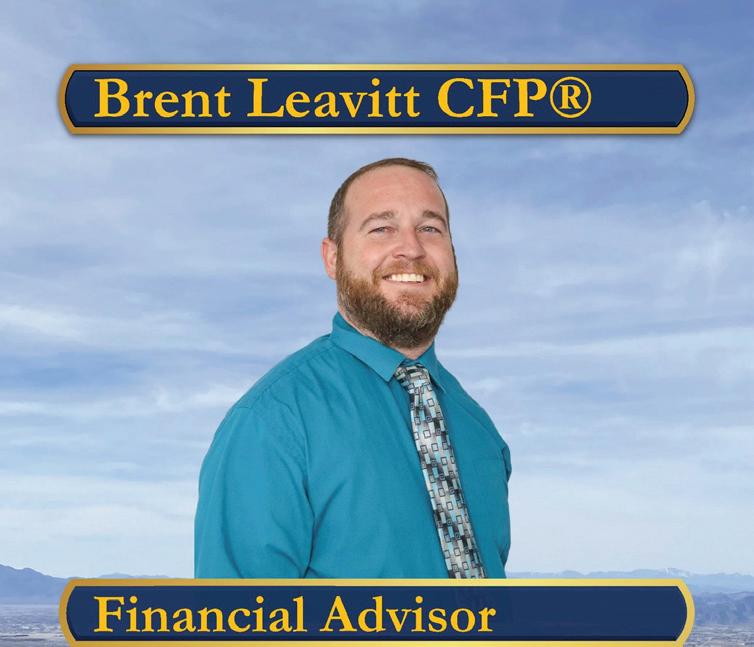


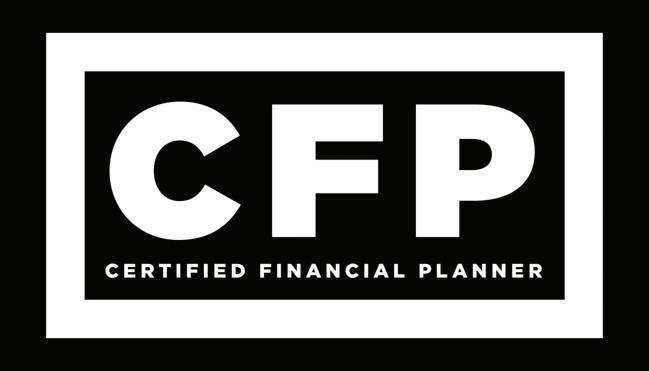





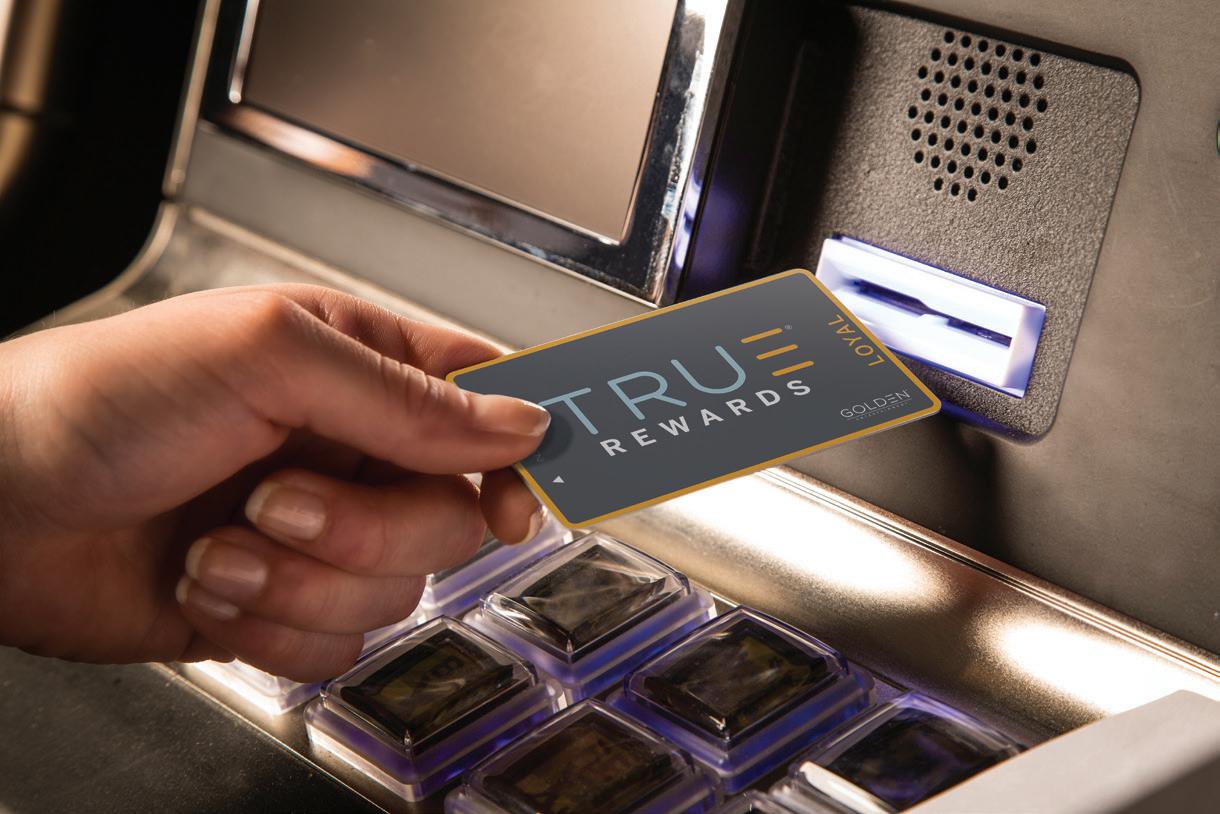

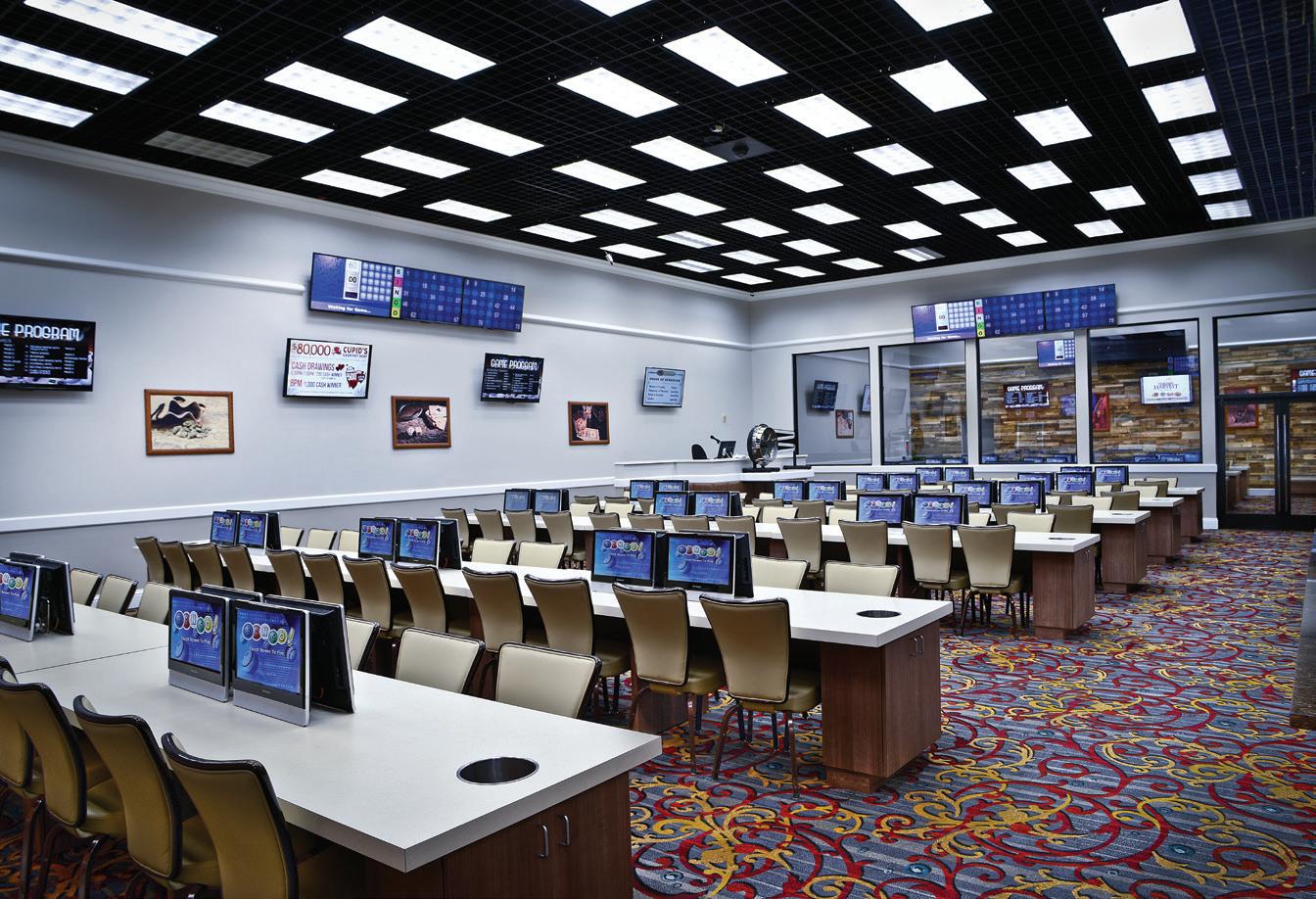


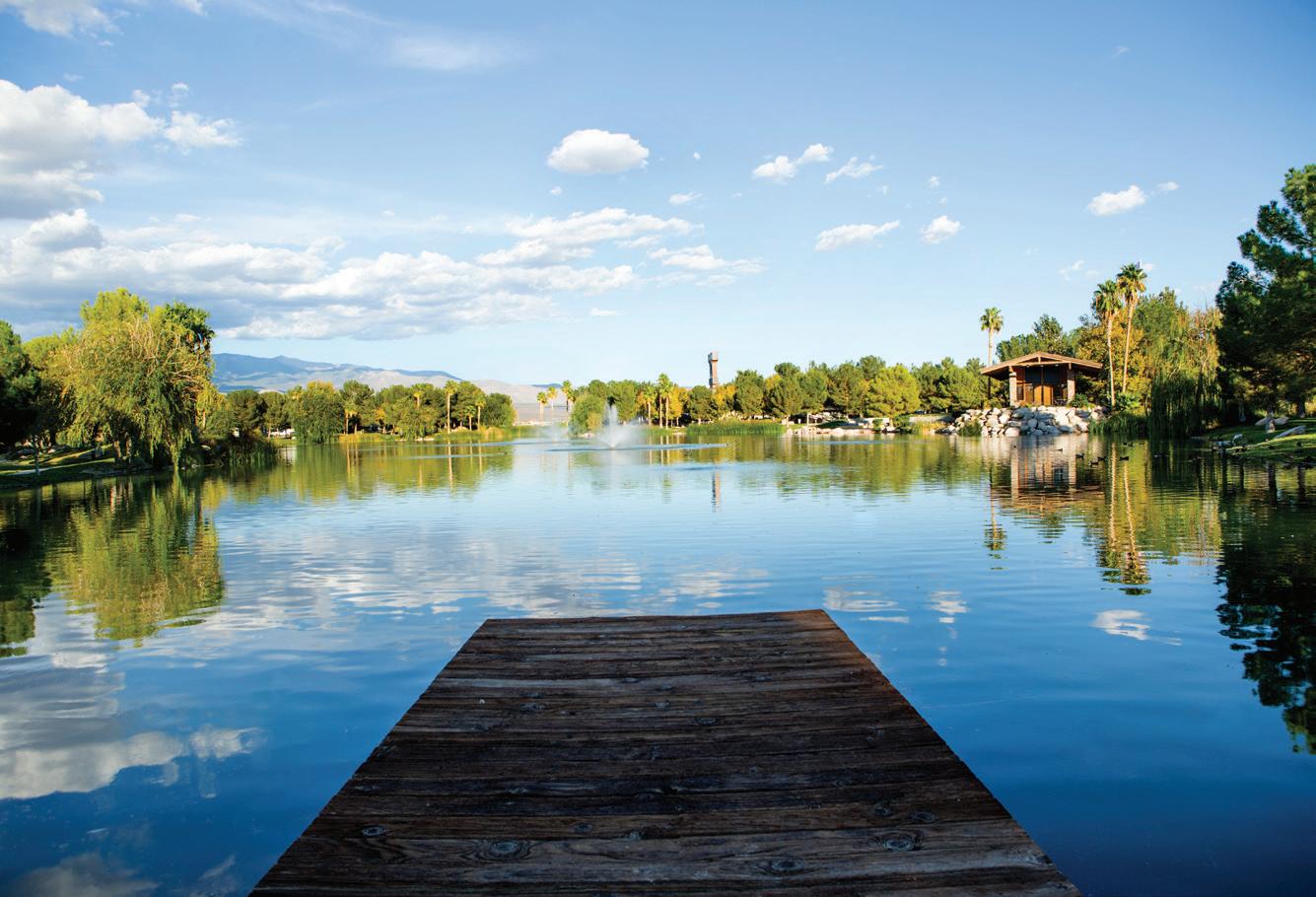
We’re doing more than providing energy choices and internet, we’re powering a community. Together, we’re serving the places you call home.

